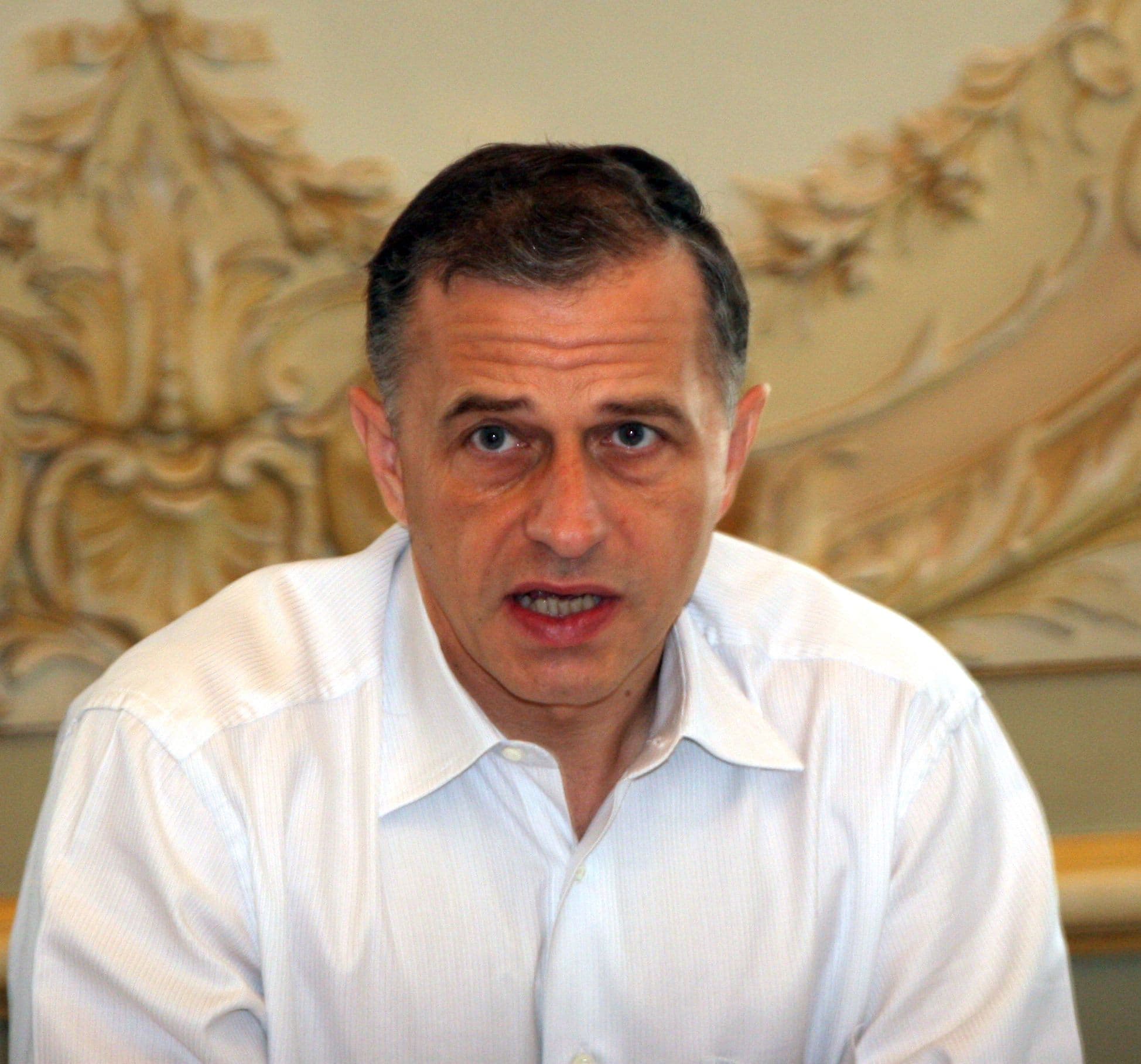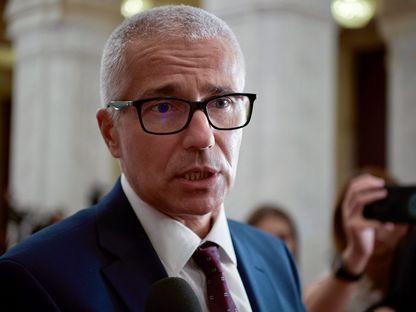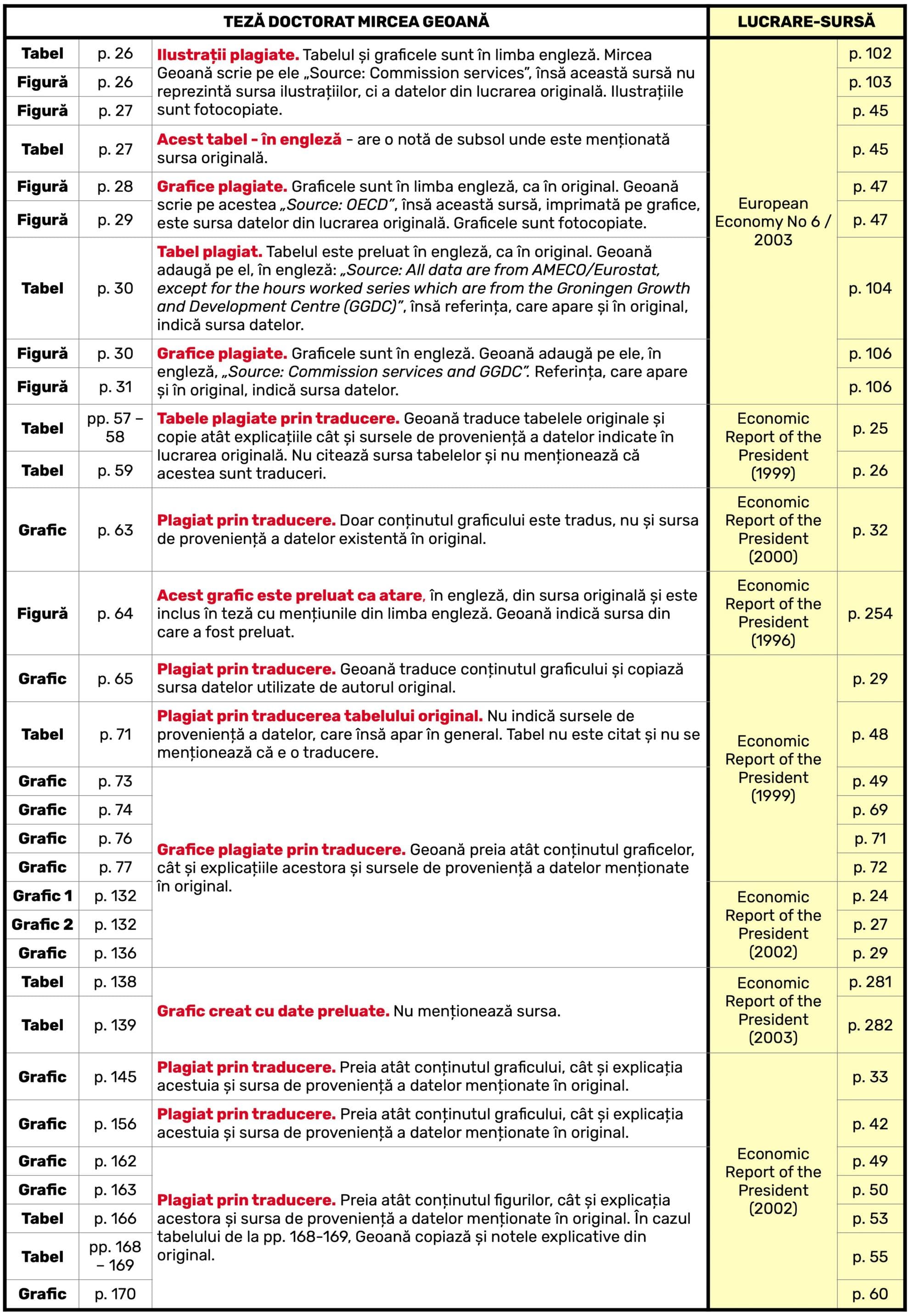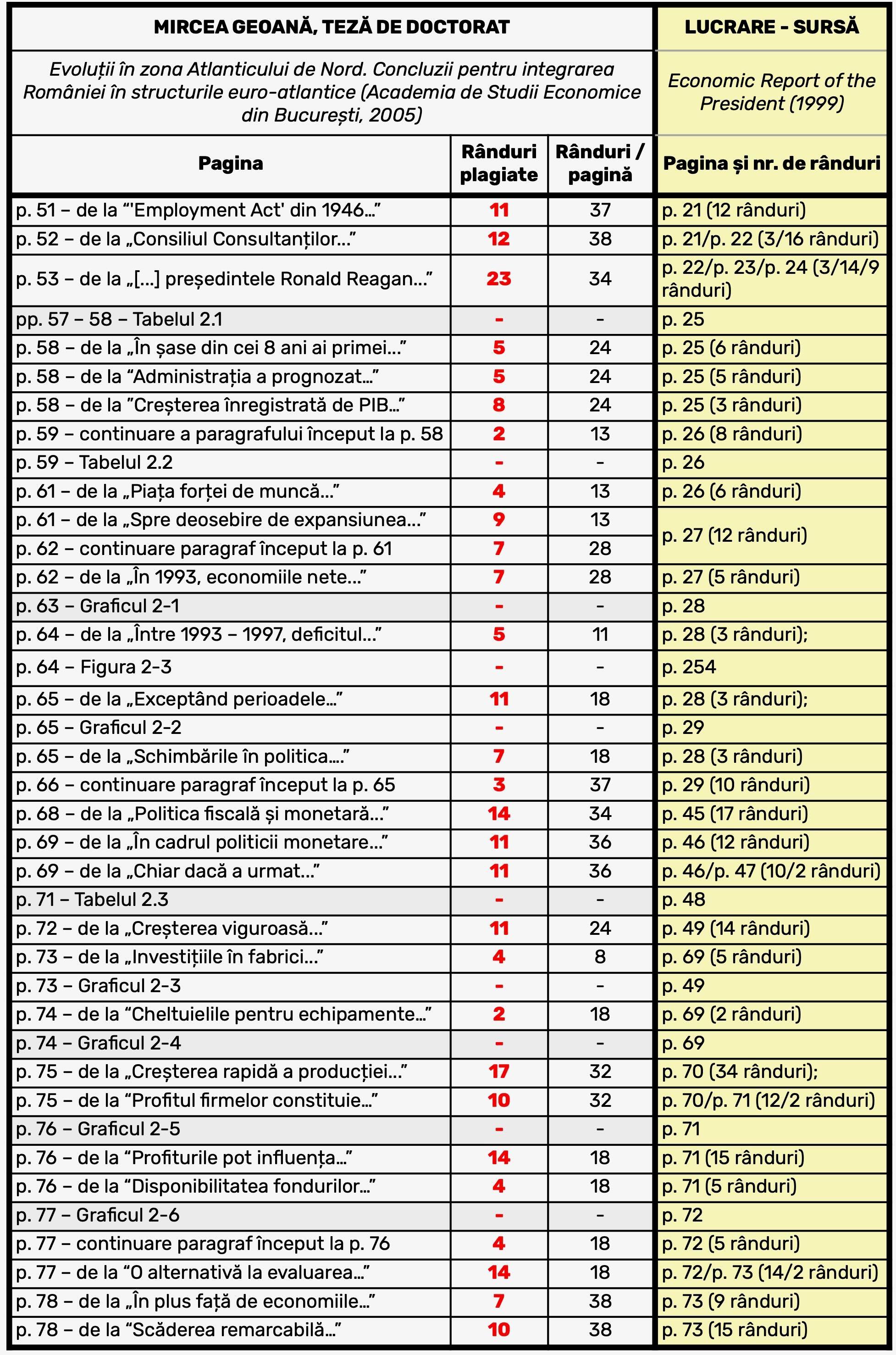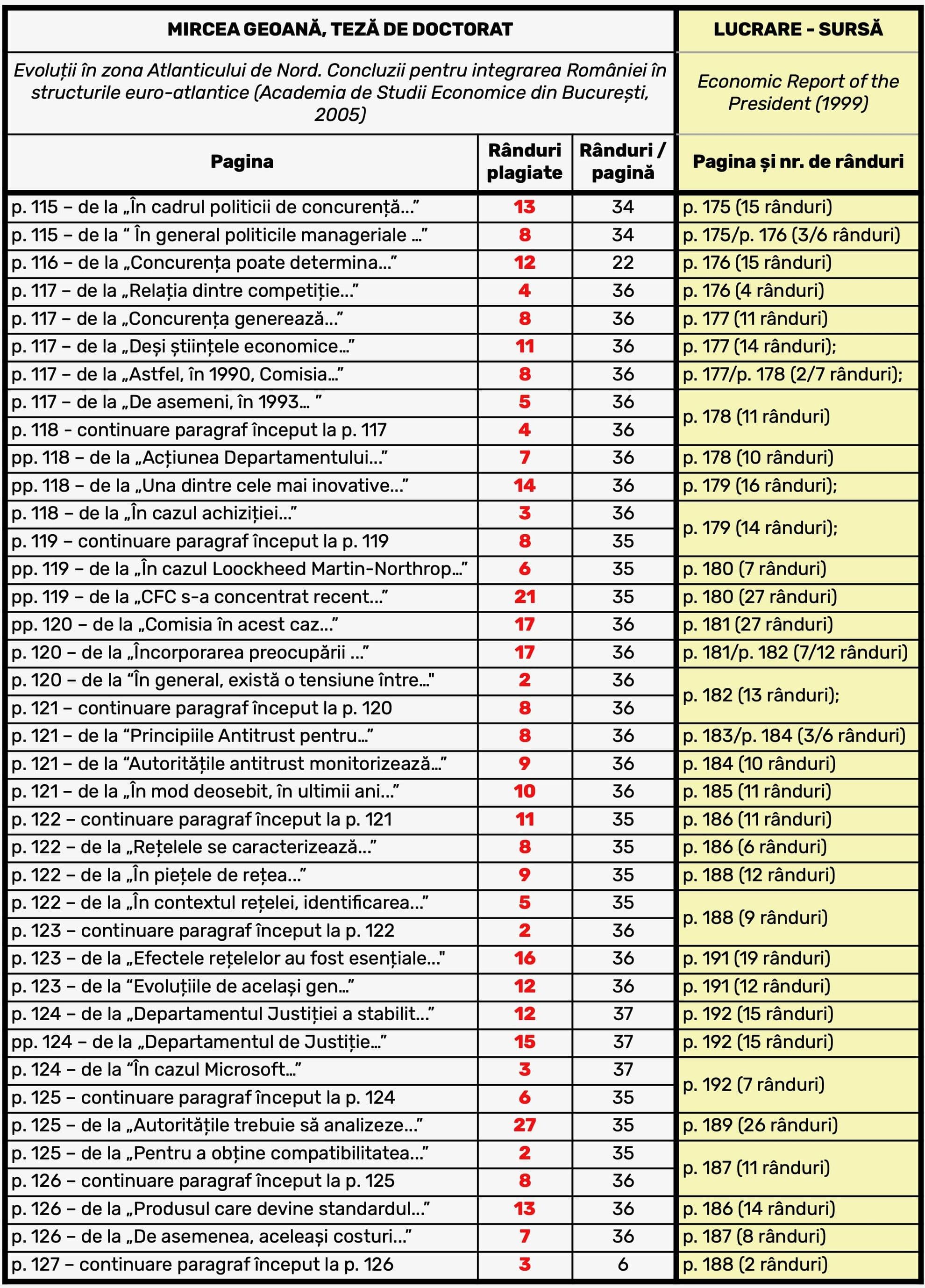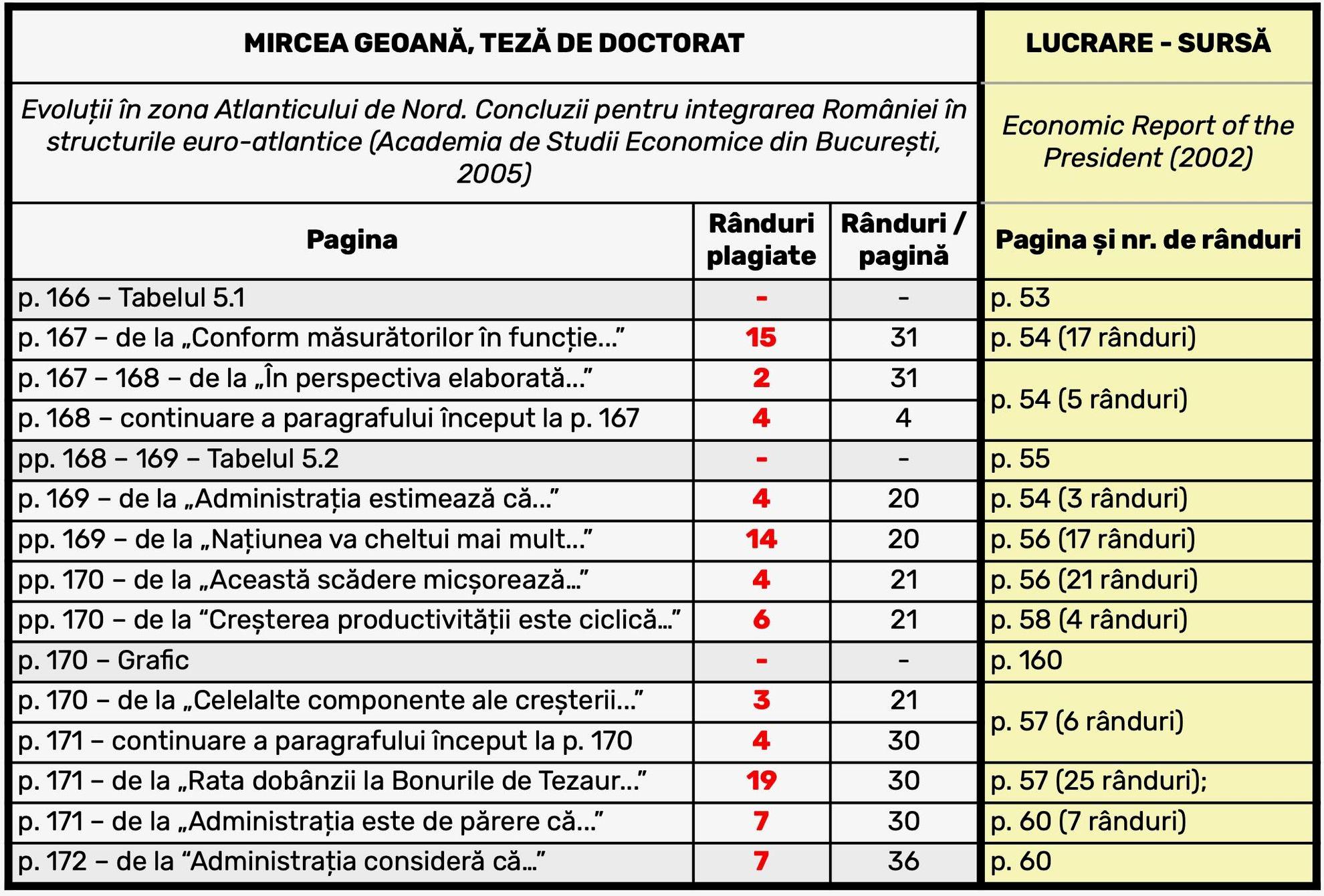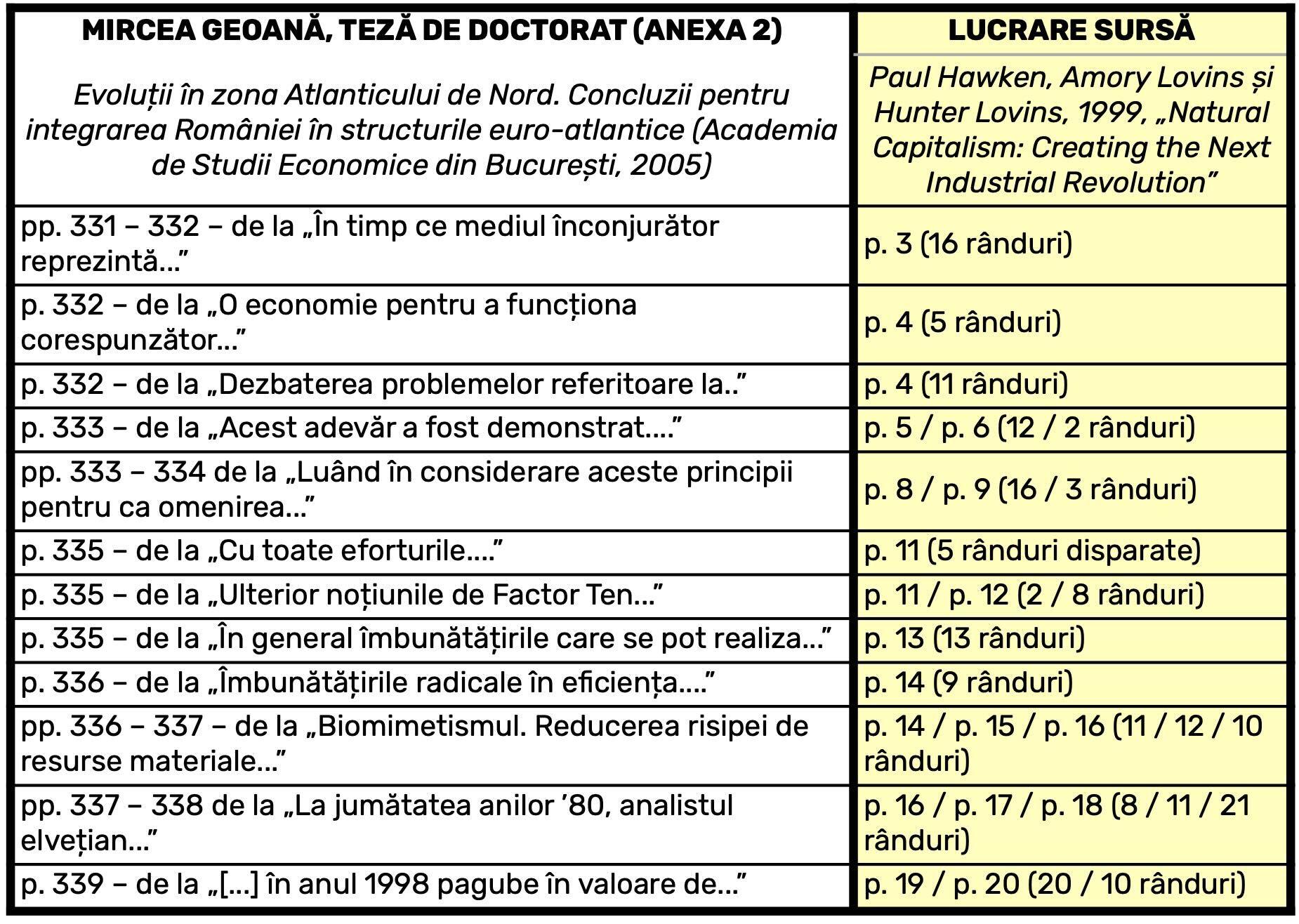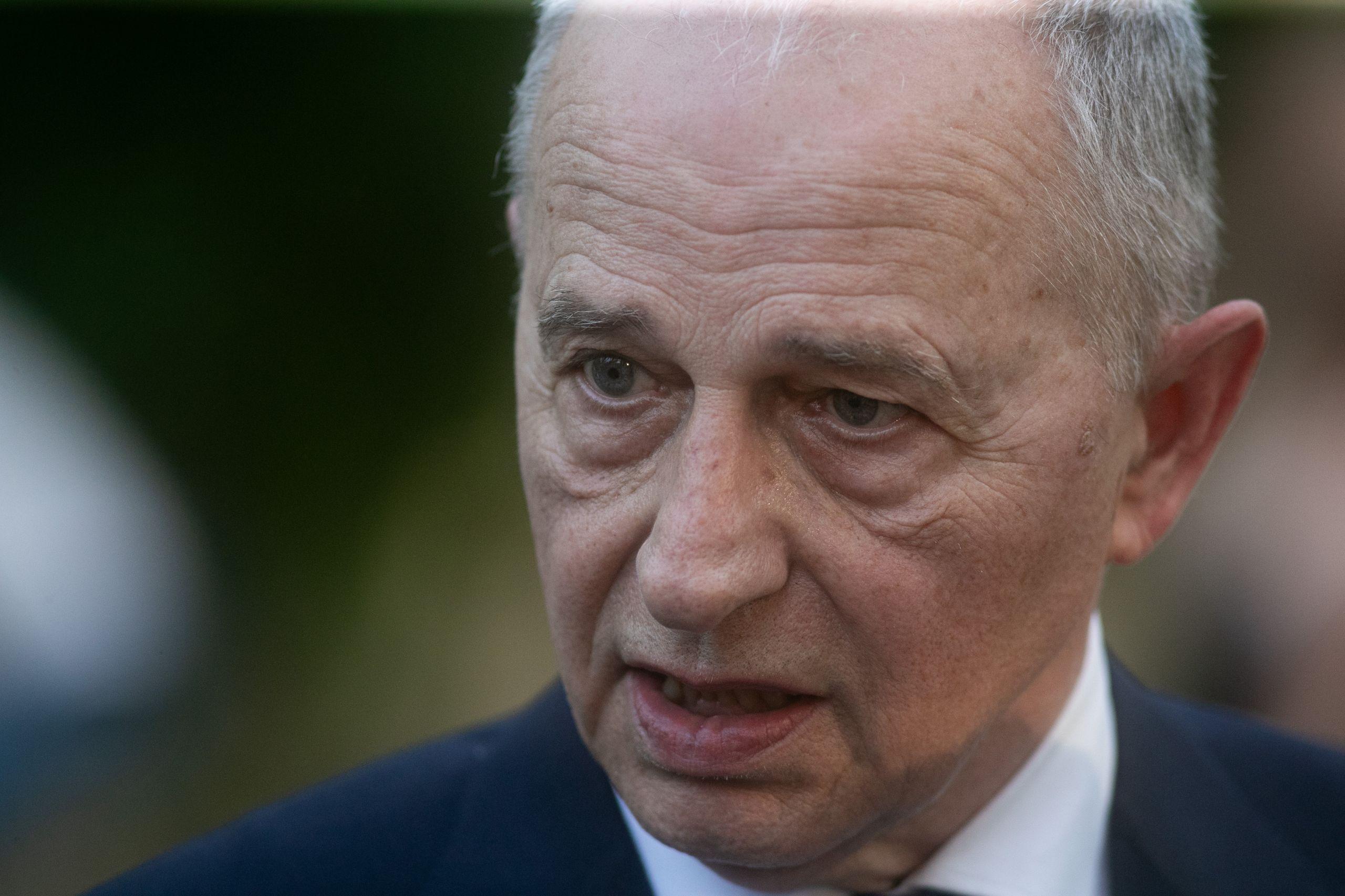
Mircea Geoană, NATO Deputy Secretary General, obtained his doctoral degree in 2005, after 12 years of doctoral studies. PHOTO: INQUAM PHOTOS / VIRGIL SIMIONESCU
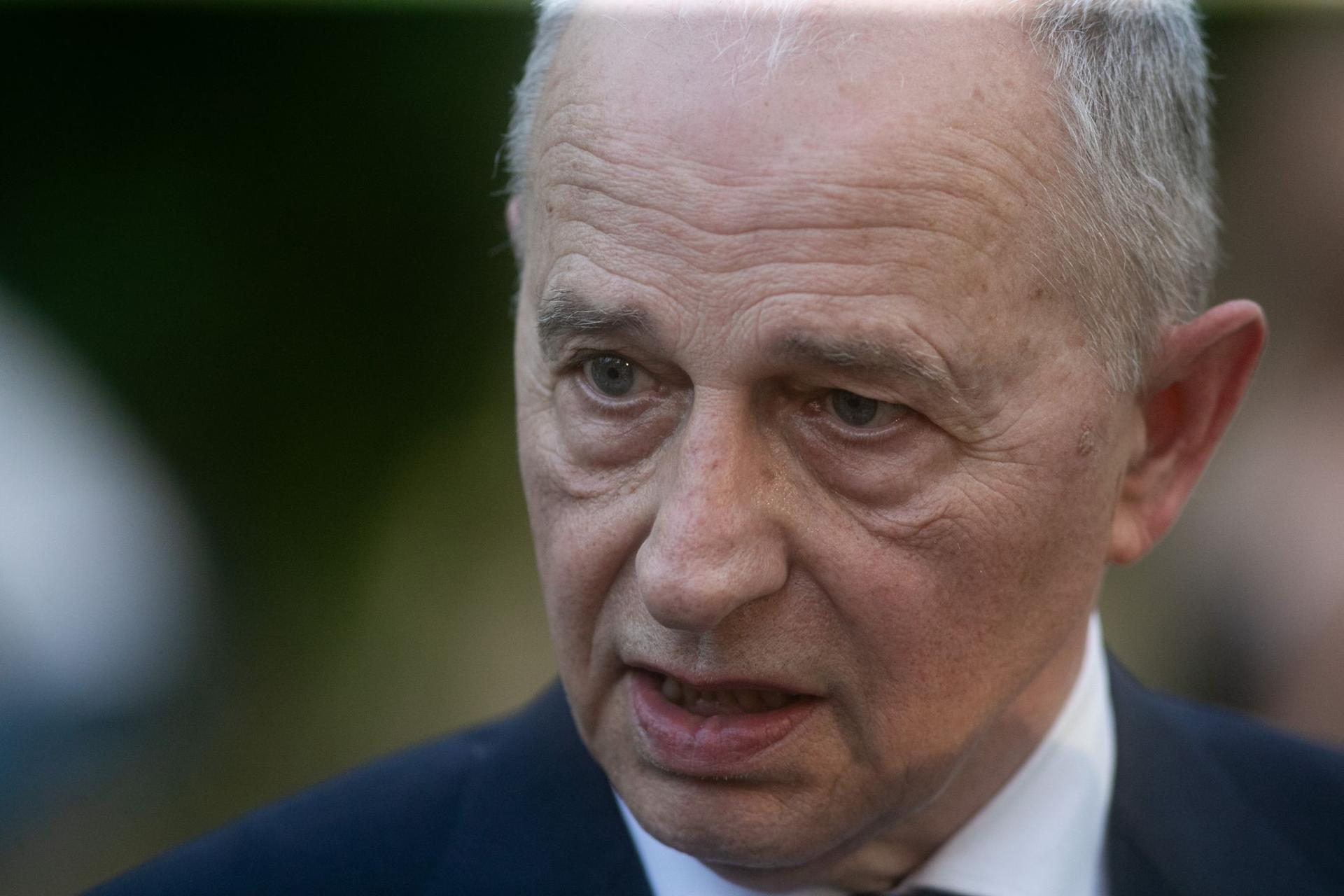
Mircea Geoană, NATO Deputy Secretary General, obtained his doctoral degree in 2005, after 12 years of doctoral studies. PHOTO: INQUAM PHOTOS / VIRGIL SIMIONESCU
EXCLUSIVE. Mircea Geoană plagiarized from two American presidents: Bill Clinton and George W. Bush
English Section
01/07/2024
Read here the Romanian version of this article.
- PressOne today presents evidence that Mircea Geoană plagiarized dozens of pages from the annual reports submitted to the US Congress by US Presidents Bill Clinton and George W. Bush, by translating dozens of pages without attribution and without quotation marks;
- In 2005, after 12 years of doctoral studies, Mircea Geoană - currently NATO Deputy Secretary General and potential candidate for the presidency this fall - defended a doctoral thesis at ASE (Bucharest Academy of Economic Studies) about Romania's integration into Euro-Atlantic structures in which the central topic is compressed into 1.4% of the total work;
- Despite possessing valuable, first-hand experience on his chosen topic, Geoană - who was Romania's ambassador to Washington and then Romania's foreign minister - does not even mention in his thesis the key, textbook moments in the stages of NATO and EU accession;
- Instead, he dedicates dozens and dozens of pages to the evolution of the American economy, including in his thesis detailed considerations about the monetary policies of the Federal Reserve, about how authorities managed corporate mergers that would have jeopardized free competition, but also about the evolution of NASDAQ, inflation or the U.S. budget deficit;
- In an extensive discussion with PressOne, Mircea Geoană unconvincingly denied plagiarizing in his thesis: "I don't know, I'm telling you that what I did with my doctoral thesis was done absolutely honestly and I don't feel I did anything outside the rules of that time. Now… if the rules have changed in the meantime, that's something else";
- Tomorrow, PressOne reveals details about the context of the studies that brought him the title of PhD in economics without having checked the key criteria for obtaining the title from the legislation of the time: "the elements of originality specific to the approached field" and "the modalities of their scientific validation".
Mircea Geoană, NATO's Deputy Secretary General, substantially plagiarized the doctoral thesis he defended nearly 20 years ago at the Bucharest Academy of Economic Studies.
At least 78 of the 279 pages of the work have plagiarized content - text, graphs and tables - taken without attribution from various sources. Plagiarized content was also found in the appendices: in a random check, I discovered in Appendix no. 2 that at least 9 pages have plagiarized content.
Mircea Geoană used a technique of unauthorized content appropriation, also found in other doctoral theses of high-ranking dignitaries: plagiarism by translation.
Most of the content identified as plagiarized by the NATO Deputy Secretary General comes from three official documents issued by the U.S. Presidential Administration: the Economic Report of the President, which also includes the Report of the Council of Economic Advisers.
More precisely, these are three reports, entitled the same, Economic Report of the President. The first was presented to the U.S. Congress in February 1999 by President Bill Clinton, and the other two by President George W. Bush in February 2002 and February 2003, respectively. None of these works are cited in the text of Mircea Geoană's doctorate and are not listed in the bibliography.
In a discussion with PressOne, Mircea Geoană did not categorically deny that he plagiarized portions of his doctoral thesis. He only said that he worked "diligently" on his work:
Mulți ne citesc, puțini ne susțin. Fără ajutorul tău, nu putem continua să scriem astfel de articole. Cu doar 5 euro pe lună ne poți ajuta mai mult decât crezi și poți face diferența chiar acum!
"I don't know, I mean I'm telling you in the most honest way that I did it with all my heart and I did it, as they say, diligently, and as much as I could at that time doing, working on it. I mean to start copying from others, it's not really my way. If there's something, I pray, but no, no, no... It was, it was worked on and done for real, and seriously worked on for years."
After 12 years
Four days after turning 47, Mircea Geoană was defending his doctoral thesis and receiving the scientific title of PhD in economics. It was July 18, 2005.
At that time, Mircea Geoană was a senator and president of the largest party in Romania - the Social Democratic Party (PSD) - a position he had held for only four months, more precisely since March 2005, when he replaced Adrian Năstase, after the Social Democrats' failure in the parliamentary and presidential elections.
THE JUSTICE MINISTER’S PLAGIARIZED DOCTORATE. 140 pages of copied content in Radu Marinescu’s thesis
More than half of Justice Minister Radu Marinescu’s PhD thesis in Law is plagiarized. According to PressOne’s analysis, at least 56.68% of the pages of the work titled The System of Means of Evidence in Civil Proceedings contain text copied from other authors — specifically 140 pages out of the thesis’s 247 pages.
Geoană was then entering the peak stage of his political career.
Although he had previously been Romania's ambassador to the US (1996 - 2000) and foreign minister (2000 - 2004) in the powerful government led by Adrian Năstase, Geoană reached the height of his political power after defeating Ion Iliescu in the PSD internal elections and becoming PSD president.
This is the context in which Mircea Geoană was defending his doctoral thesis at the Academy of Economic Studies, 12 years after beginning his doctoral studies. The legal duration of a doctorate, at that time, was four years.
Un newsletter pentru cititori curioși și inteligenți.
Sunt curios
According to an official response received from the Academy of Economic Studies (ASE), Mircea Geoană was enrolled as a doctoral student in 1993, in the field of International Economic Relations, by rector's decision no. 21/21.06.1993, but obtained his PhD title only on July 18, 2005.
In the first four years after the fall of communism, only 82 doctoral degrees in economics were awarded in Romania, according to public documents issued by the Minister of Education, 62 of which were awarded by the Academy of Economic Studies: 23 in 1990, 12 in 1991, 18 in 1992 and only 9 in 1993, the year Geoană became a doctoral student.
In a period when a doctorate was a rarity - as evidenced by the small number of scientific titles awarded in the first four years after the fall of communism - Geoană's admission to doctorate, in a specialized field such as International Economic Relations, occurred although he had no studies in economics.
Geoană had an engineering degree, obtained in 1983 from the Faculty of Mechanics of the Polytechnic Institute of Bucharest - now the Polytechnic University of Bucharest - and was a recent graduate of the Faculty of Law at the University of Bucharest.
Nor did his professional activity theoretically recommend him to be admitted to a PhD in such a technical field as International Economic Relations: for seven years he had been an engineer at Energomontaj Bucharest (1983 - 1990), and in 1991 he joined the Ministry of Foreign Affairs.
The topic of Romania's integration into Euro-Atlantic structures: 1.4% of the thesis
Mircea Geoană's doctoral thesis is titled Evolutions in the North Atlantic Area. Conclusions for Romania's integration into Euro-Atlantic structures.
In 1993, when Geoană was admitted to the doctorate, Romania's accession to NATO and the European Union were goals with extremely distant prospects of fulfillment.
Although the title of the NATO Deputy Secretary General's doctoral thesis - publicly defended in July 2005 - creates the expectation that the work will address the issue of Romania's NATO membership and that of integration into the European Union, these two aspects are marginally treated in relation to the entire content of the work.
The thesis does not mention the 1997 NATO Summit in Madrid - when Romania was not included in the first wave of accession along with other former communist countries - or the 1999 moment, when NATO asked Romania to open its airspace for Allied aircraft during operations in Yugoslavia. Nor are the start of accession negotiations with the European Union, in 1999 in Helsinki, and the start of NATO accession talks, announced in 2002 at the NATO Summit in Prague, mentioned.
Doctoral student Mircea Geoană makes no reference to these key moments for Romania's integration into Euro-Atlantic structures - the topic he chose - although during the period he was a doctoral student, more precisely between 1996 and 2004, he was Romania's ambassador to Washington and later foreign minister, positions by virtue of which he knew in depth the course of both accession processes.
The part that concerns Romania in the entire thesis - and which is related to the actual topic of the work, expressed by the second part of its title - Conclusions for Romania's integration into Euro-Atlantic structures - is found at the end of the thesis, in the last subchapter.
This section, entitled Vectors and challenges in the process of Romania's modernization, extends from page 276 to 279 and numbers only 4 pages, whose content is structured in two parts:
(1) Romania's participation in EMU (n.a. - Economic and Monetary Union) - considerations regarding the transition to the single currency, euro and
(2) General elements regarding the connection of Romania to the Lisbon Strategy.
Relative to the total of 279 pages of the scientific work, these 4 pages, in which issues related to "Romania's integration into Euro-Atlantic structures" are touched upon, represent 1.4% of the content.
References to European structures are also more than brief. They are to be found in the first two subchapters of Chapter VII, extending from page 252 to page 275.
This part of the thesis occupies only 23 pages out of the 279 pages of the thesis, i.e. 8.2% of the total content.
Otherwise, Mircea Geoană's doctoral thesis is a detailed analysis of the evolution of the US economy, complemented in the introductory part by 14 pages on transatlantic relations.
"Own contributions" of one and a quarter pages
Mircea Geoană's thesis was coordinated by Professor Gheorghe Dolgu, former rector of the Academy of Economic Sciences (1971-1980), former deputy minister of Foreign Affairs (1980-1984) - during the period when communist diplomacy was led by Ștefan Andrei - and former ambassador.
The NATO Deputy Secretary General's work is a baroque one, divided into 7 chapters, and is accompanied by no less than 20 appendices. The work itself numbers 279 pages of content, while the appendices have 278 pages.
A doctoral thesis in the socio-human field is an original product of scientific research, which must have, mandatorily, the following components: (1) framing the research topic in a theoretical paradigm and bibliographic research, (2) applied research methodology and (3) the research itself, in which the doctoral student presents the results of his own academic analyses.
Mircea Geoană's doctorate has neither methodology nor the research part, although an introductory section of the thesis is called State of Knowledge, and Chapter II, Models and Paradigms.
There is an academic oddity in the Table of Contents itself: a section, inserted between the end of the last chapter and the Conclusions, entitled Own Contributions (pp. 280 - 281).
Doctoral theses do not include such a chapter or subchapter, the author's personal contributions being presented in the research part itself or in the research results section.
However, Mircea Geoană's thesis does not have such a part.
In this section of Own contributions, which extends over a page and a quarter (pp. 280-281) and practically concludes the work, Geoană says that:
"In the work I tried to outline the idea that the Euro-Mediterranean space, then the North-West European and finally the North Atlantic, was a space of innovation with an overwhelming role in the making of Western civilization and I underlined the role played by Hellenism and Judeo-Christianity, the Renaissance, the Reformation and the philosophy of the Enlightenment, the commercial revolution of the 16th-17th centuries".
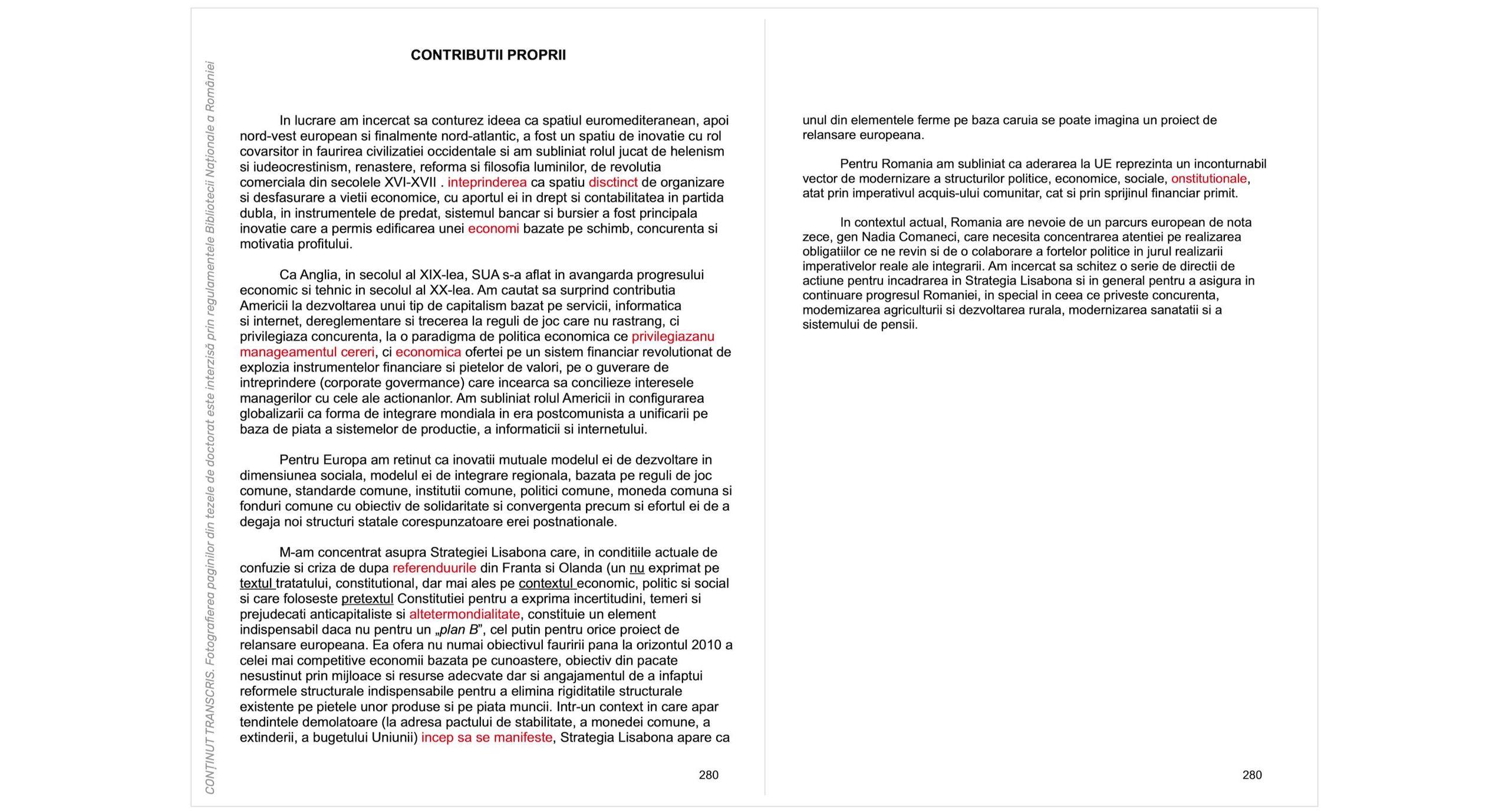
The two pages titled "OWN CONTRIBUTIONS" from Mircea Geoană's doctoral thesis (pp. 280-281). The regulations of the National Library of Romania do not allow photographing pages from doctoral theses, and the content in the image is transcribed exactly as in the original (lack of diacritics and spelling errors, marked in red by PressOne, belong to the author).
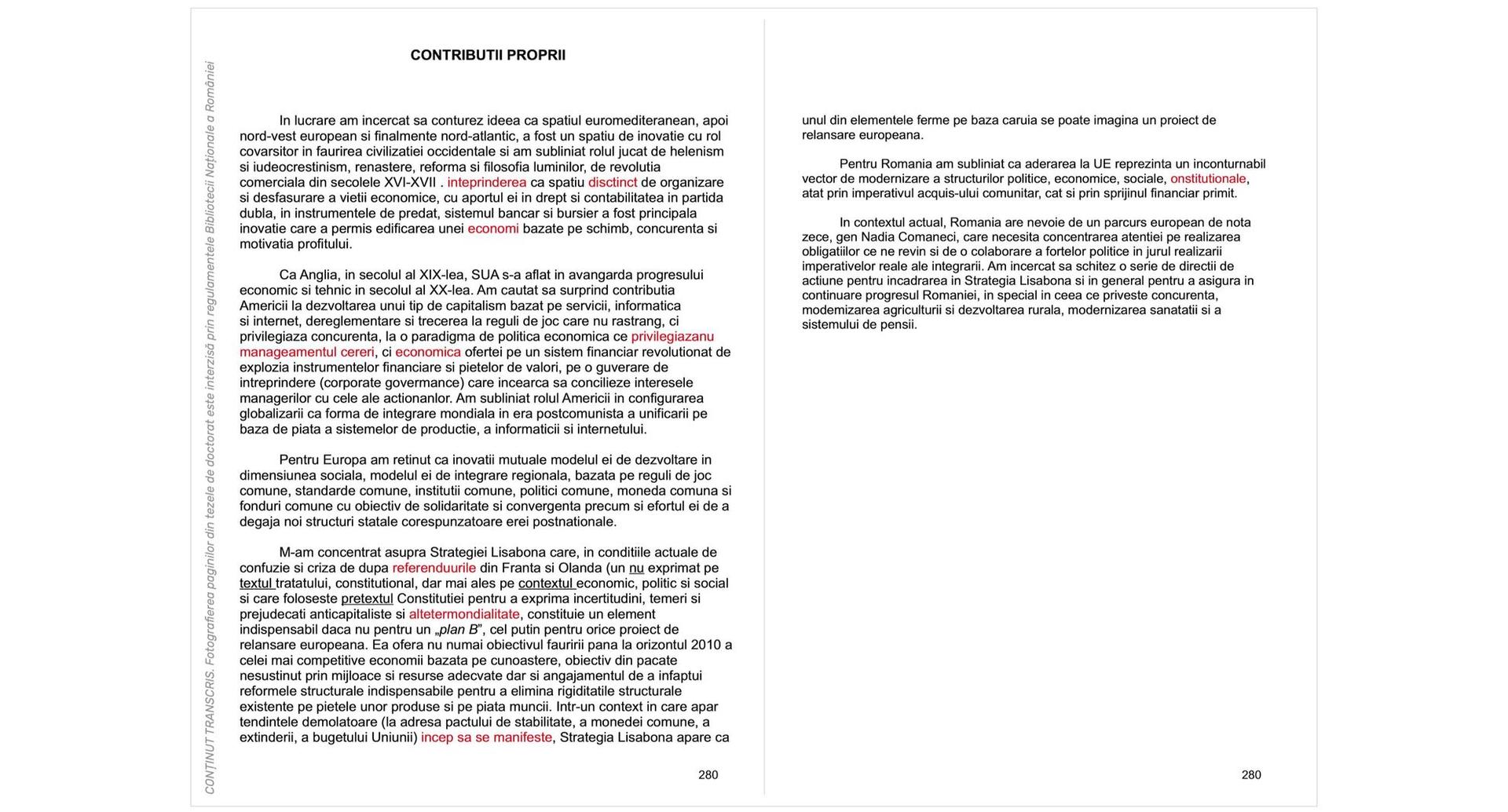
The two pages titled "OWN CONTRIBUTIONS" from Mircea Geoană's doctoral thesis (pp. 280-281). The regulations of the National Library of Romania do not allow photographing pages from doctoral theses, and the content in the image is transcribed exactly as in the original (lack of diacritics and spelling errors, marked in red by PressOne, belong to the author).
In reality, the references mentioned in this paragraph - such as "the role played by Hellenism and Judeo-Christianity, the Renaissance, the Reformation and the philosophy of the Enlightenment, the commercial revolution of the 16th-17th centuries" - are not even tangentially addressed in the thesis.
In the Own contributions section, Geoană makes a somewhat bizarre reference to Nadia Comăneci, put in relation to Romania's European path: "Romania needs a European path with a perfect ten, Nadia Comaneci style".
***
The NATO Secretary General's doctoral thesis gives the impression that it was drafted and assembled by several people, because the writing and organizational style differs in many parts of it.
For example, the Introduction of the thesis (pp. 6-10) and the first two segments of Chapter I (pp. 13-24) contain numerous bibliographic references, included in 29 footnotes.
Also in this part of Chapter I, entitled The Transatlantic Relationship, there are several references to the author's person, such as "in the second part I will refer", "in the third part I will make", "I will make a series of assessments", "I will present", "the quality of Romanian foreign minister has inevitably determined my participation...", "this experience [...] helped me to formulate...".
References to the author's person suddenly disappear from the chapters of the work in which I discovered evidence of content taken without attribution, by violating the originality norms, in force at the time of Mircea Geoană's defense of his doctorate.
Illustrations copied directly from English
I discovered the first evidence of plagiarism in Chapter I, subchapter 2, entitled A brief comparison between the European and American economies.
From pages 26 to 31, thus over a distance of five pages, 6 graphs and 3 tables are included, all plagiarized.
These illustrations are made in English and not in Romanian, the language in which the work is written, this being the first indication that they were not executed by Mircea Geoană, but were copied. Doctoral theses must be written in a single language - Romanian or another language of international circulation.
All 6 graphs and 3 tables are plagiarized from the same source, European Economy. 6/2003. The EU economy 2003 review.
Another common point of these illustrations is that they take over, from the original, information about the sources of the data. However, none of the figures credit the authors of the illustrations, or the source works from which they were taken.
Academic norms stipulate that, in the case of borrowed illustrations, the source of the data must be explicitly mentioned and, also, whether the graph/table/diagram is executed by the author of the doctorate or taken from another source, which must be specified.
In addition to these 9 illustrations copied directly from original sources, there are 15 other plagiarized graphs and 7 plagiarized tables in Mircea Geoană's thesis.
These 22 illustrations are in Romanian, and Geoană reproduced their form and content identically, as they appear in the original, in English.
On all these 22 graphs and tables, Geoană copied the titles and the source of the data. In some cases, Geoană also plagiarized the explanatory notes from the original works.
Unattributed figures and data
As I said at the beginning, I discovered plagiarized content - text, graphs and tables - on 78 of the 279 pages that make up the work.
72 of the 78 pages have content plagiarized from three reports signed by U.S. Presidents Bill Clinton and George W. Bush.
If I discovered plagiarized illustrations as early as page 26 of NATO's Deputy Secretary General's doctoral thesis, the first solid question marks appeared in Chapter II, entitled Models and Paradigms.
Although this chapter is very dense in figures and statistical data about the American economy, the information is not attributed and no bibliographic source is cited, so it is not known where the author got the information and data presented.
Here are some examples of information that are not attributed, so that their origin is known:
"Industrial workers worked 10 hours a day, 6 days a week, and earned an average of $375 per year." (p. 41)
or
"Between 1895 and 1904, 157 companies absorbed 1800 firms, and one-third of the formed companies controlled over 70% of the market. These firms had capital of approximately $4 billion - an amount 4 times greater than the total of firms created between 1890-1893." (p. 42)
or
"During this period, budgetary priorities were: securing revenues, for which allocated funds increased by 11.6% per year between 1949 and 1989; education, for which funds increased by 13.0% per year; and health, with funds allocated to this area increasing by an astonishing 16.3% per year." (p. 43)
or
"Expressed in dollars corresponding to a constant purchasing power (1982 USD), defense spending decreased from 166 billion USD in 1953 to 137 billion USD in 1960; then, after a period of recovery to 204 billion USD in 1970, it decreased to 152 billion USD in the 1980s, before the period of rearmament." (p. 43)
For example, in the sentence "To assess the general situation of that period it is necessary to present some data related to the labor market situation" (p. 40), the impersonal register is used - "it is necessary to present" - different from the previous wordings, which included first-person references.
The first bulk of plagiarized text
The first indubitable evidence of plagiarism exists in Chapter II, subchapter 2, Economic Expansion. The New Paradigm. Deregulation.
22 pages from this section are plagiarized by translation from the work Economic Report of the President transmitted to the Congress, a document submitted by U.S. President Bill Clinton to the U.S. Congress in February 1999.
This work is neither cited nor mentioned in the bibliography of the doctoral thesis.
The portions of content plagiarized by translation from English into Romanian are not automatically detected when checked with anti-plagiarism software.
Translation plagiarism is included by academia among the forms of violation of integrity norms in the realization of scientific works.
This occurs when a sentence, a paragraph or a text are translated from a foreign language, without the author and the original work being cited appropriately by attribution and by marking with quotation marks, and the translated content is presented as being the original creation of the "translator".
Philosophy professor Mike Dougherty, from Ohio Dominican University, writes in his 2020 book, Disguised Academic Plagiarism: A Typology and Case Studies for Researchers and Editors, that translation plagiarism represents "the conversion of a text from one language to another with the intention of hiding its origin" (apud Bela Gipp, 2014).
The translation from the original source is so faithful in Mircea Geoană's thesis that, in some situations, even the indications made by the original authors to a series of tables or graphs that are not found in his doctoral thesis were translated.
Such an example is on page 52.
Here appears the following sentence: "Inflation began to decrease, but then began to rise sharply (Table 1.1)".
In the original, in the Economic Report of the President transmitted to the Congress, February 1999, it appears on page 22 as follows: "Inflation had been edging up as the unemployment rate came down, but it then began to rise sharply (Chart 1-1)".
The sentence is translated word for word, including the bracketed reference to table 1-1, although this table does not exist in the previous or subsequent pages, which shows even more clearly that it comes from a portion plagiarized by translation.
The reference to "table 1-1", existing in the thesis, was removed in the volume in which Geoană published his doctorate in 2006, at the Economic Publishing House. In this book, titled America, Europe and the Modernization of Romania. Foundations for a Romanian Society Project, Geoană takes a part of his doctoral thesis, including the portions plagiarized from President Bill Clinton's annual report.
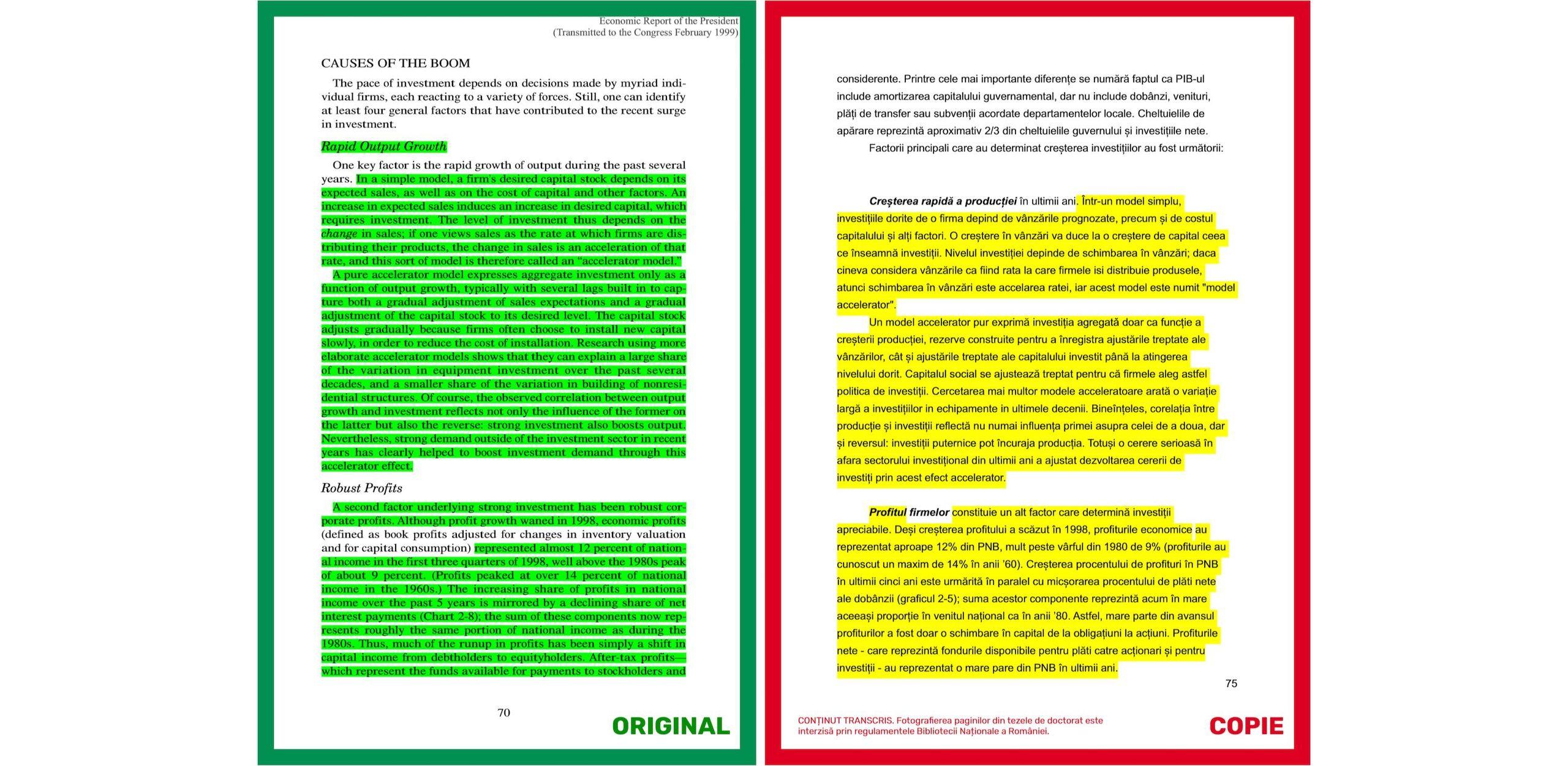
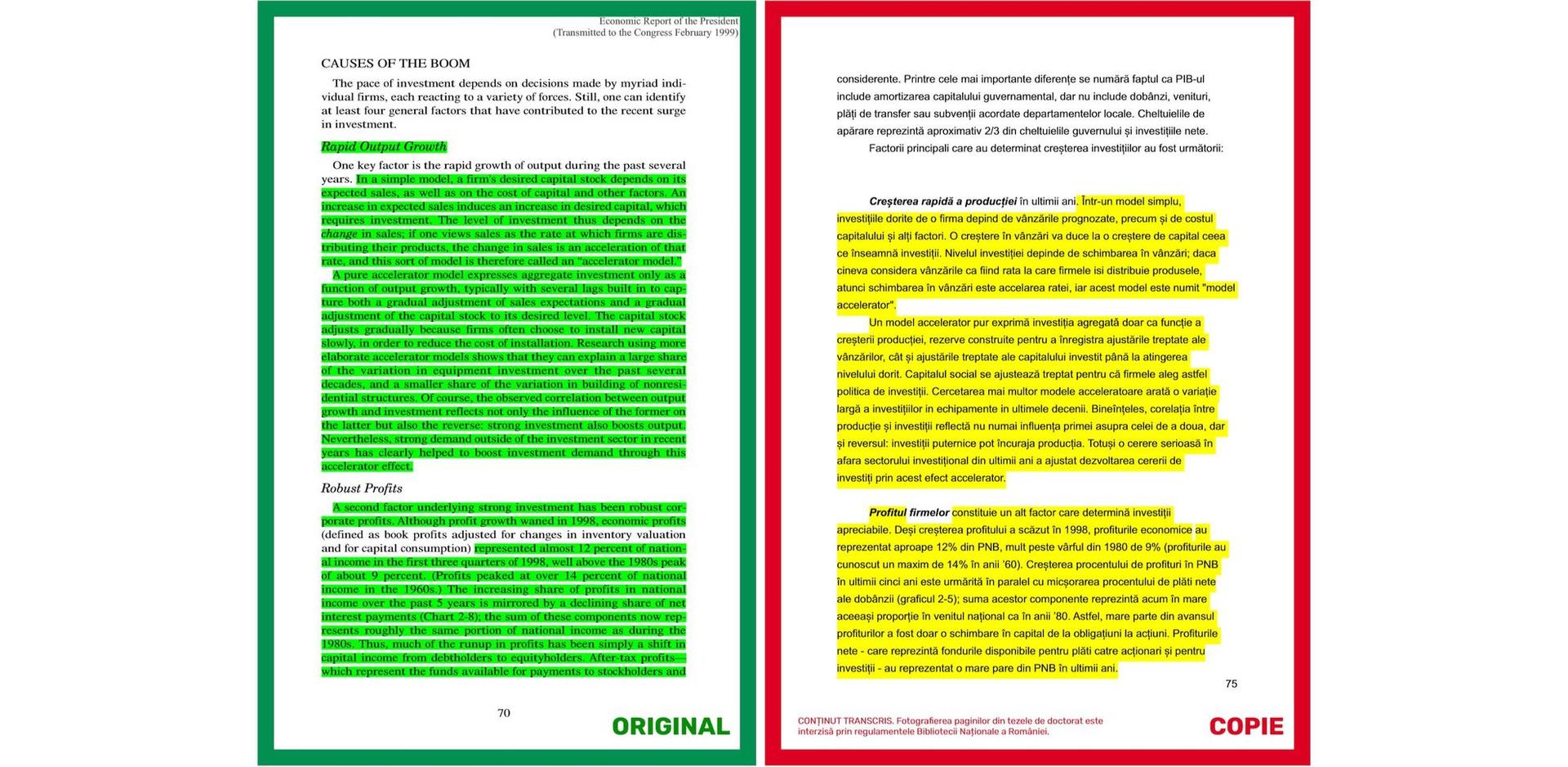
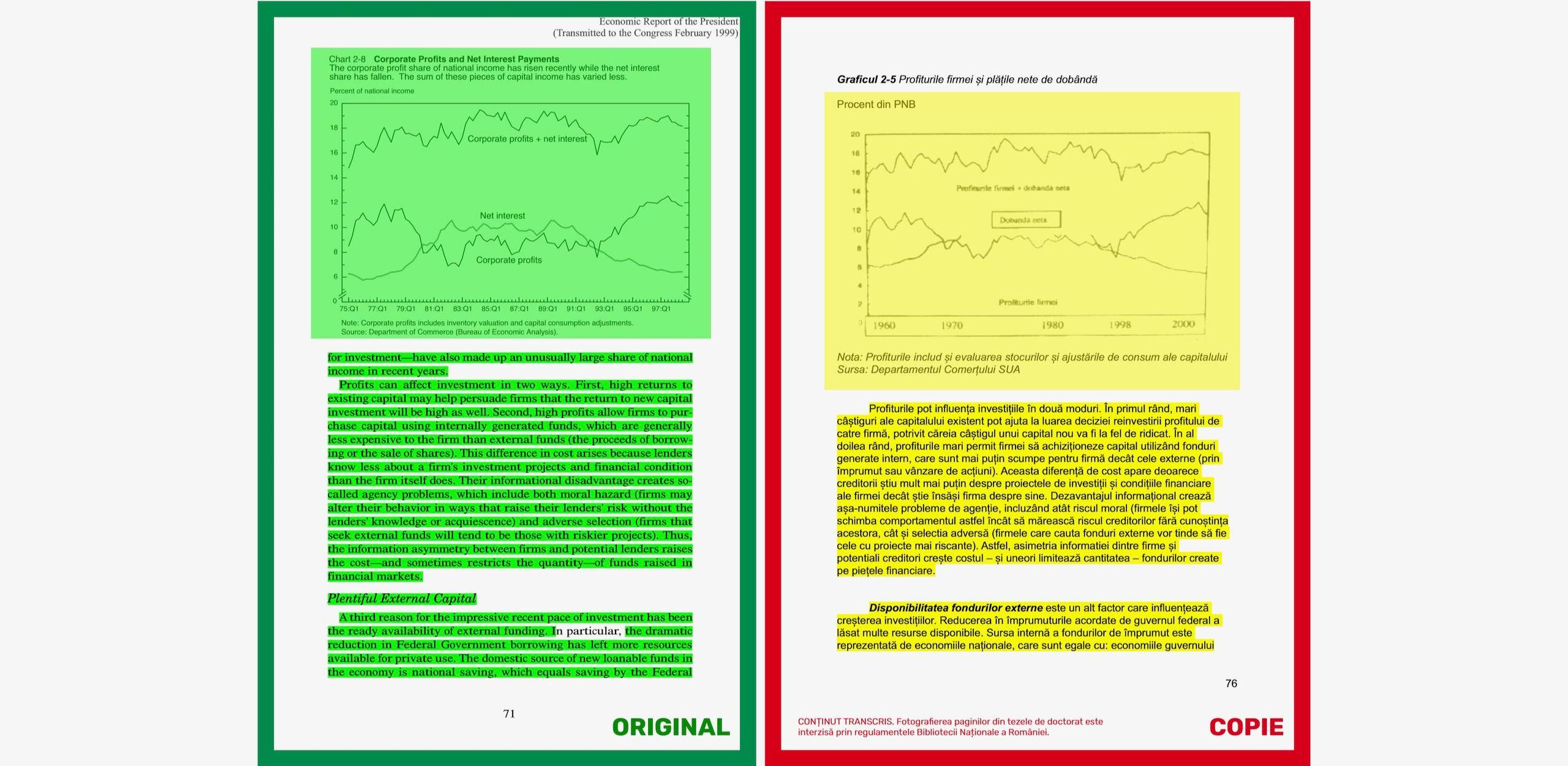
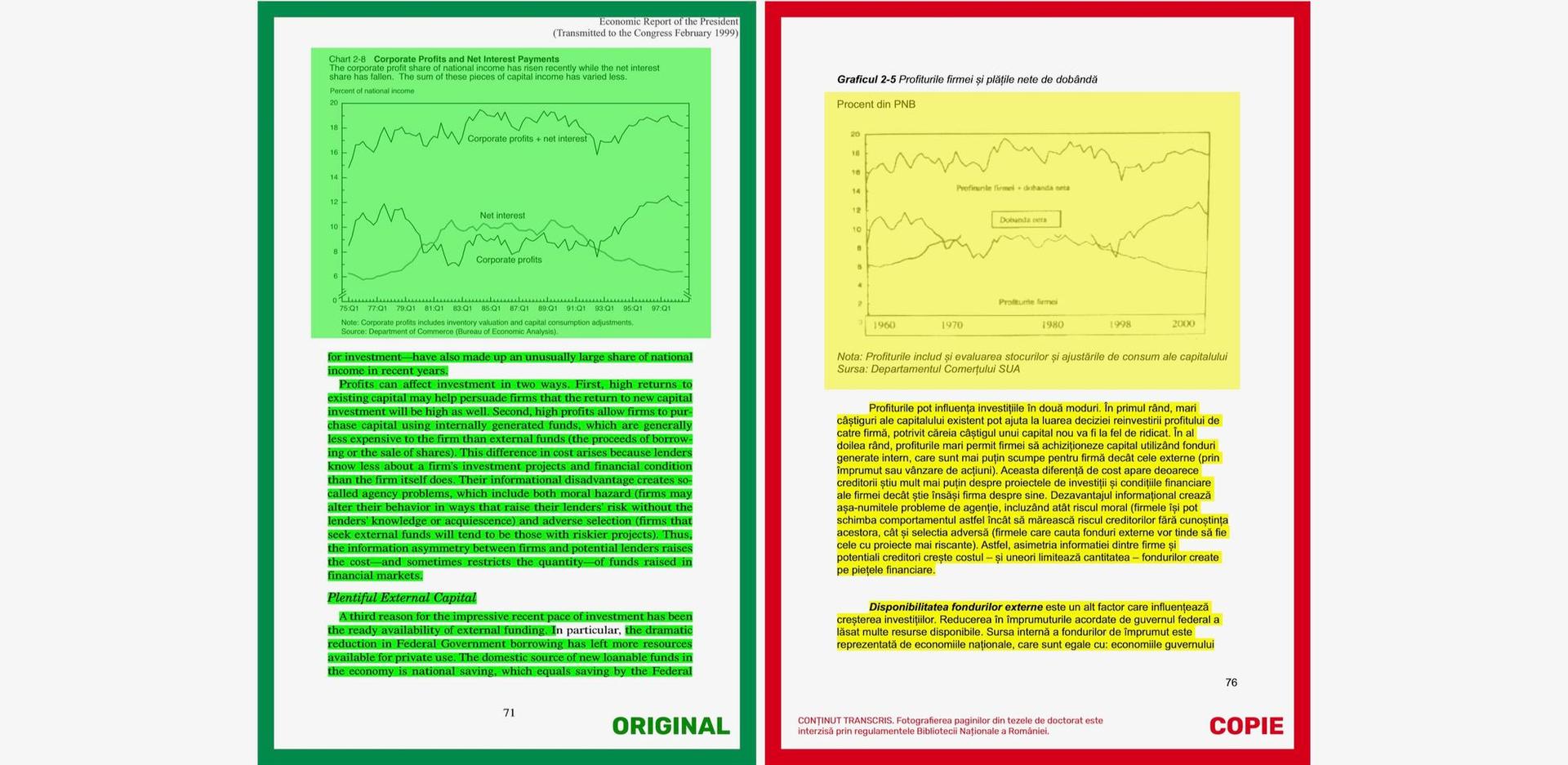
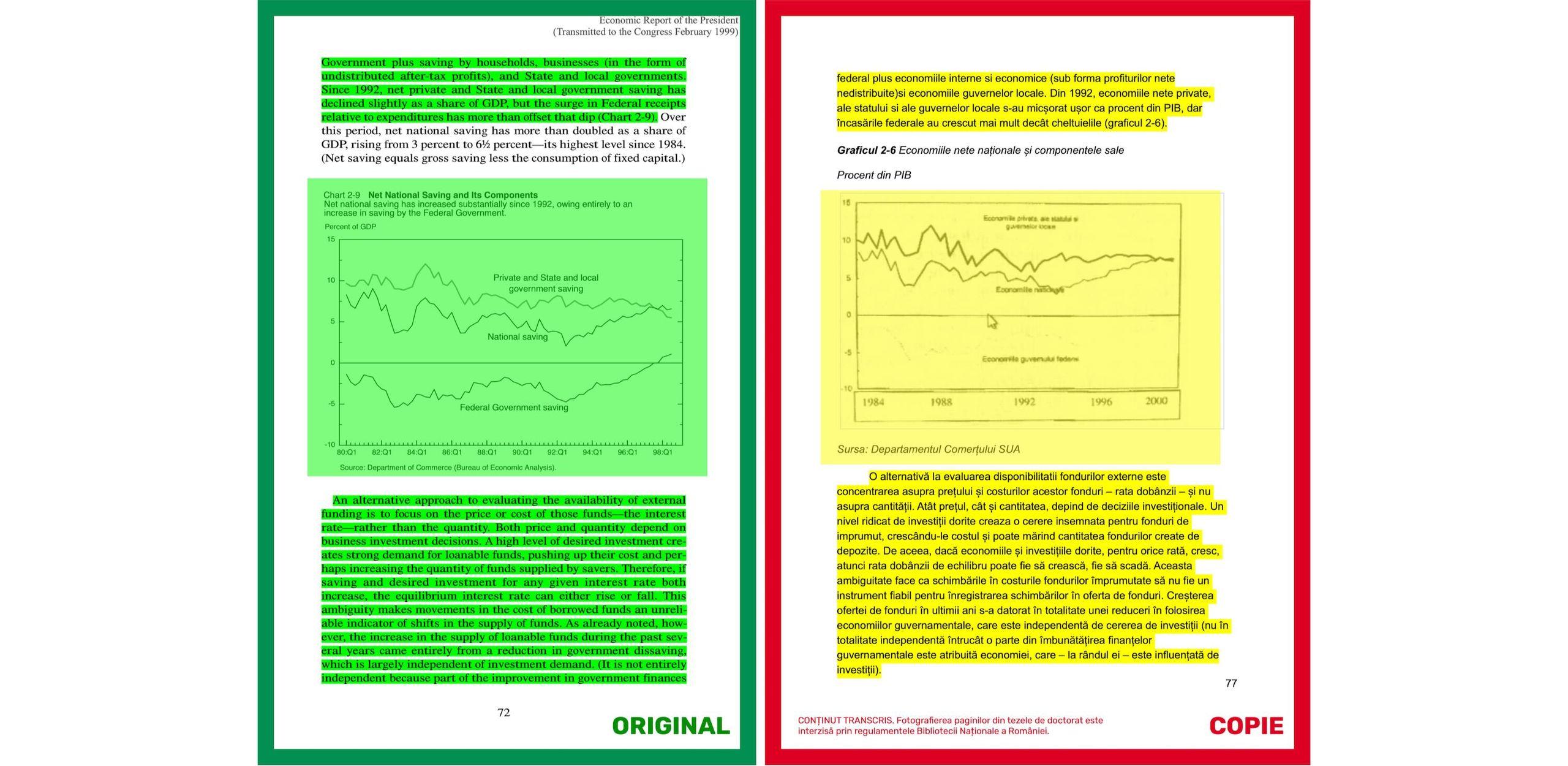
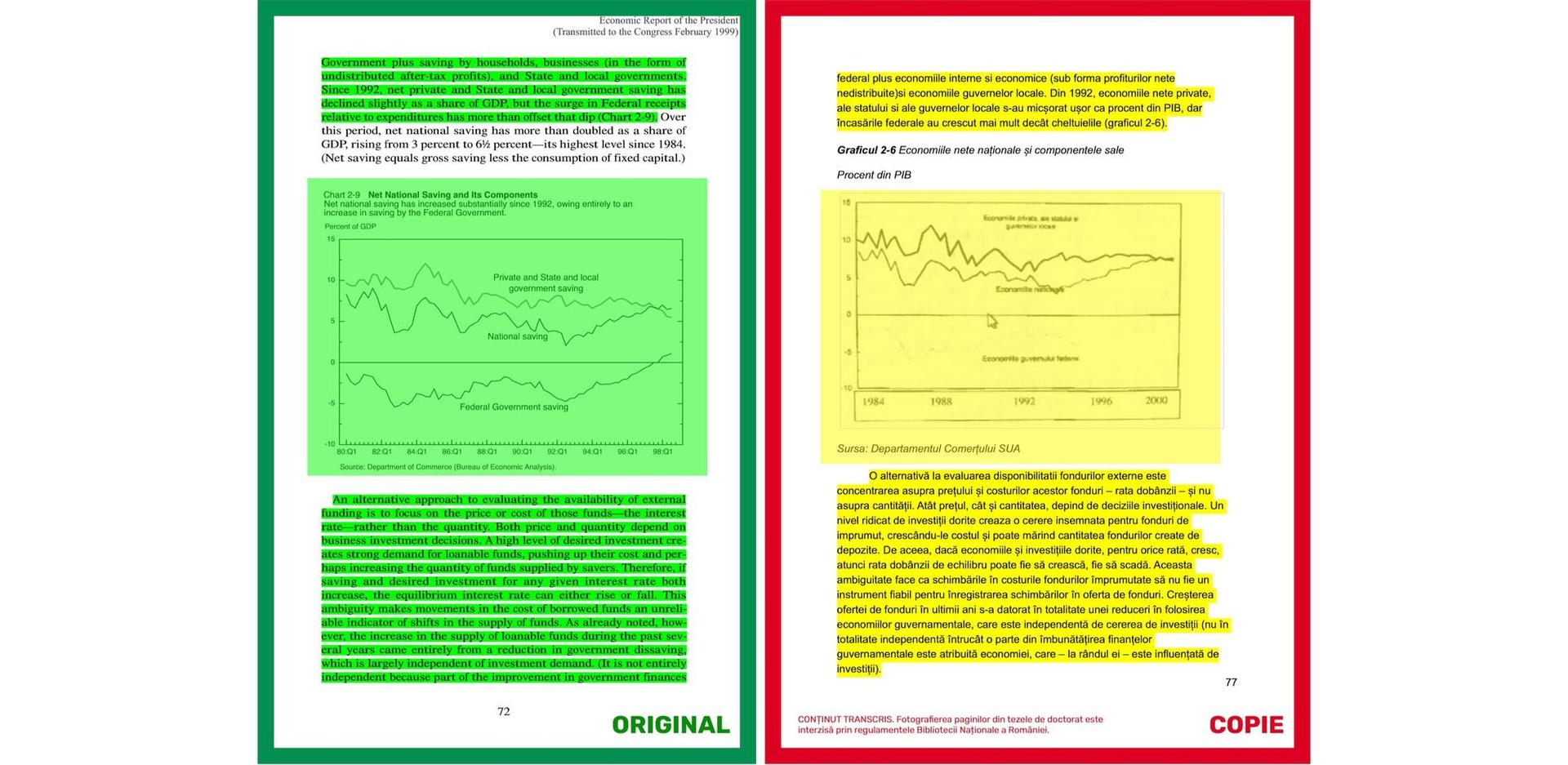
The non-existent footnotes
Another anomaly I discovered on the first page of Chapter III, subchapter 1, titled A Different Economy.
On page 101 there is a paragraph that has footnotes no. 55, 3, 4 and 5 indicated.
Footnote no. 55 is placed at the end of a quote and refers through one at the bottom of the page to Jean Rischard, but footnotes no. 3, 4, and 5, which are included in the following sentences, do not exist at the bottom of the page, just as footnotes no. 56, 57 or 58 do not exist, which could have indicated a drafting error.
A plausible explanation is that the respective paragraph was plagiarized, and, out of negligence, footnotes no. 3, 4 and 5, which could have appeared under this numbering in the original work, were forgotten in the text.
"A Western economist summarized the great change thus: 'Let us put it simply: earlier technological revolutions were based on a transformation of energy or materials. For it is the transformation of time and distance that we are dealing with today penetrates deeper into the industrial fabric. At least as importantly, it places knowledge and creativity at the forefront of the factors of production, and far ahead of capital, labor and raw materials"55 . The same economist points out that the domestication of steam in the late 18th and early 19th centuries made it possible to go suddenly from horsepower to a mechanical power of a thousand horse-steams, which represented a quantum leap of 103 . By comparison, the leap in telecommunications is 104 ,and the leap in computing is a staggering 105".
Normally, the numbering of footnotes is done automatically by the Word writing program - this was also valid in 2005, the year Mircea Geoană's thesis was written.
However, footnotes may have a different numbering than the normal one, when the content was copied, along with them, from another text, and subsequently the content was not edited or corrected - which, most likely, happened in this case.
This situation is not singular in the thesis, a similar anomaly also being found in Appendix no. 2, on page 325. This time, footnote no. 2 is signaled in the text, but it does not exist at the bottom of the page. Before and after this footnote no. 1 there is footnote 121 (p. 298), respectively footnote 122 (p. 331).
The situation is repeated in Appendix no. 15, where there is a footnote no. 1 from page 504, followed by footnotes no. 1, 2 and 3 on page 505 and a new footnote no. 1 on page 507, all framed by footnote no. 126 (p. 493) and 127 (p. 539).
Returning to Chapter III, subchapter 1, it also abounds in factual data of great precision, which are not attributed or cited, their origin being unknown:
"As early as 1988, the U.S., Japan, West Germany, Great Britain and France spent approximately $630 million daily for R&D, reaching approximately $1 billion daily in the period 1992-1993." (p. 102)
Plagiarism including the quote
Another 13 pages with plagiarized content are found in Chapter III, subchapter 2, titled Innovation and Competition.
The source is again the Economic Report of the President, submitted by President Bill Clinton to the U.S. Congress in February 1999.
On page 120 of the thesis, Geoană takes over, including the quotation marks, a quote which in the original is found on pages 181-182, and which is marked with the signs of citation.
"In so doing, it promotes (as stated in the U.S. Constitution) 'the progress of science and useful arts, by granting exclusive rights to authors and inventors in their respective writings and discoveries, for limited times.'" (p. 120)
Since in the beginning part of the thesis there are several attributions made correctly, it is clear that Mircea Geoană knew the techniques of citation by indicating the source and using quotation marks, which shows the intention to mask plagiarism where he copied content ad litteram, but did not indicate the source.
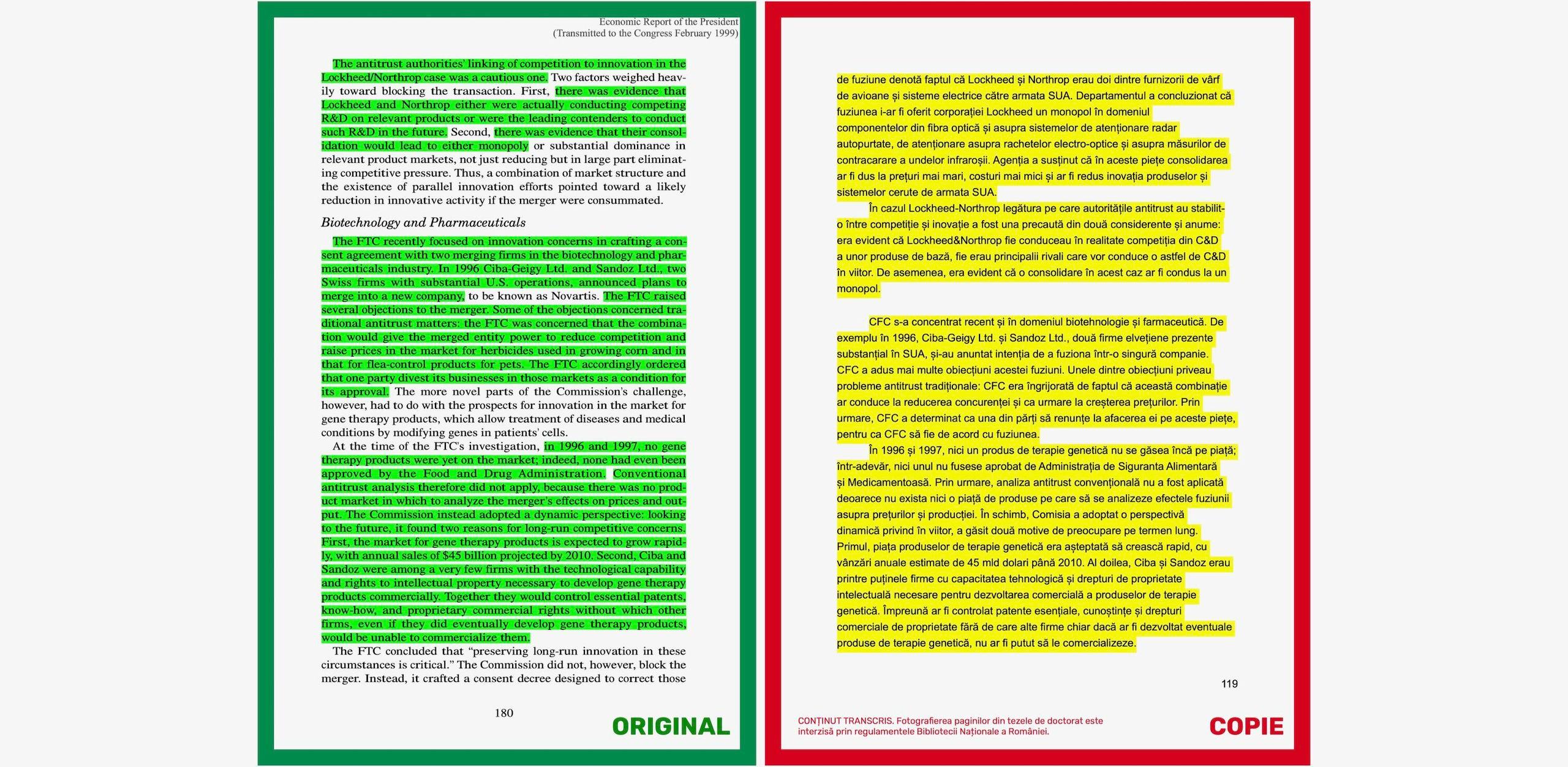
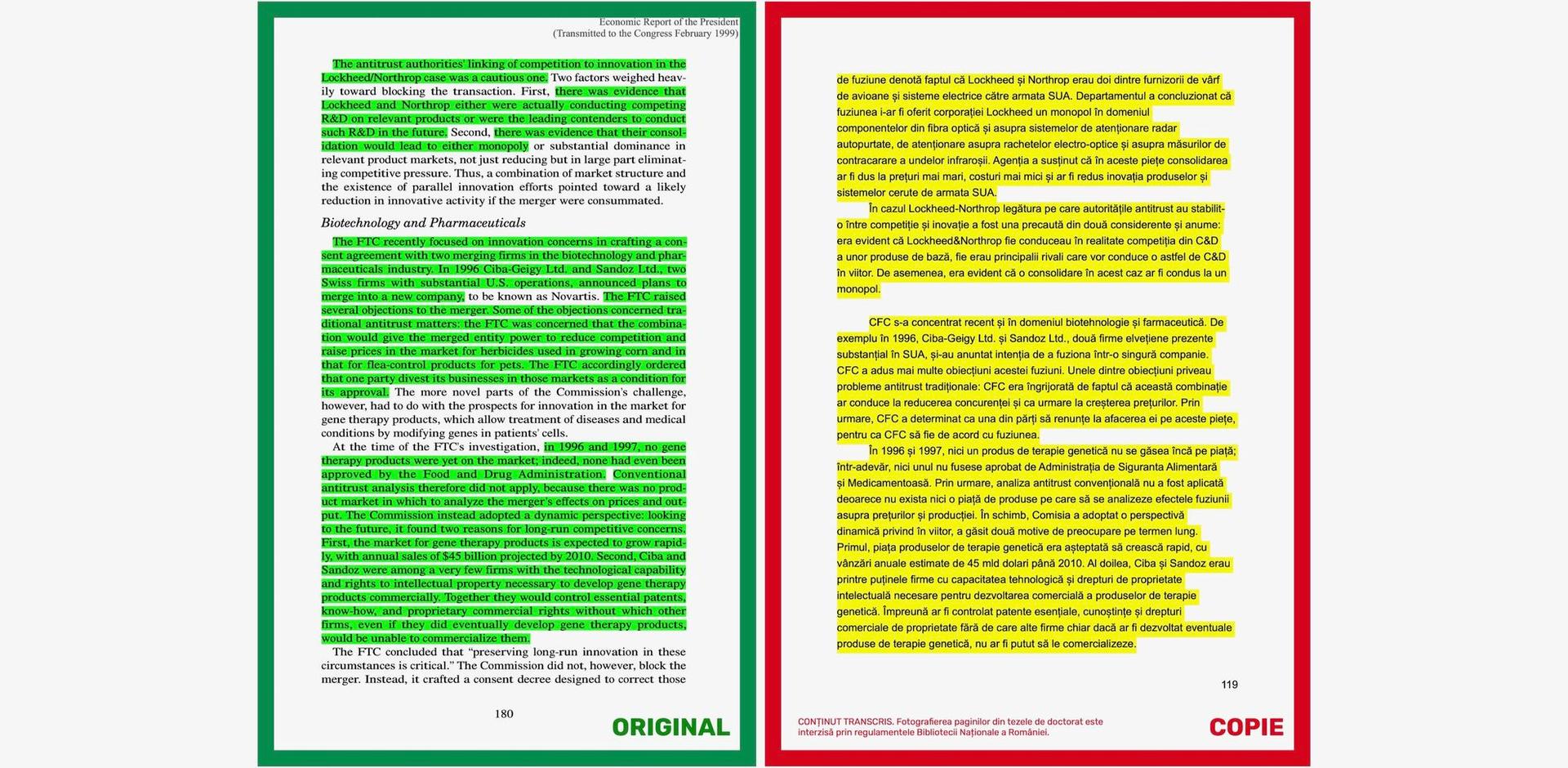

Example of massive plagiarism in Mircea Geoană's thesis. The yellow marks represent plagiarized content from pages 116-125.

Example of massive plagiarism in Mircea Geoană's thesis. The yellow marks represent plagiarized content from pages 116-125.
30 consecutive pages
The longest sequence of plagiarized content is in Chapter III, subchapter 3, titled Crisis and Recovery at the Beginning of the Millennium.
It's no less than 30 pages, also plagiarized by translation, which are included between pages 131 and 163 of the doctoral thesis.
These works are not cited either, but the 2002 Report is mentioned in the Bibliography as being written by Garry Walton and Hugh Rockoff, which is false. The two did not work on the drafting of the report and were not among President Bush's advisors.
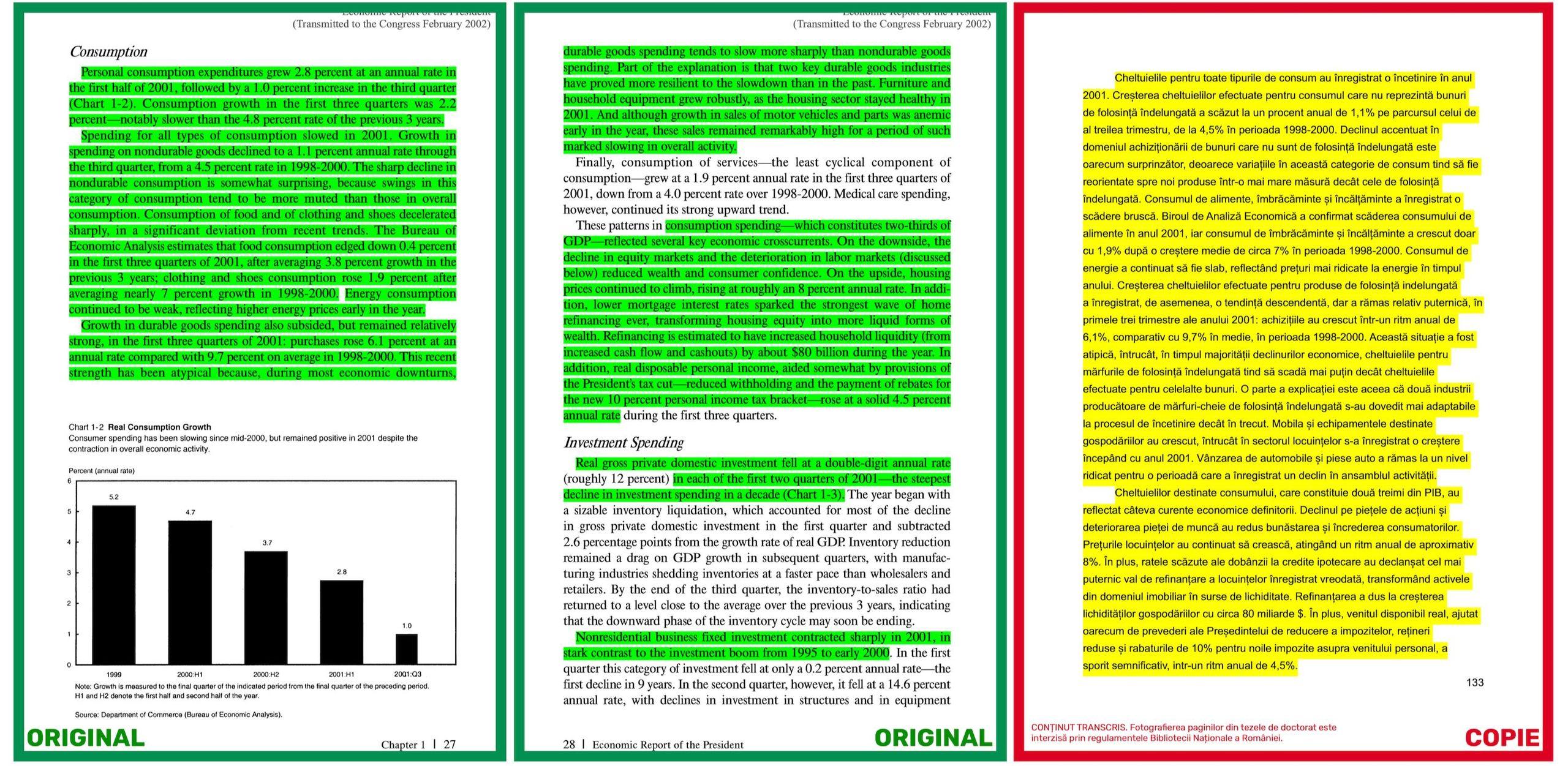
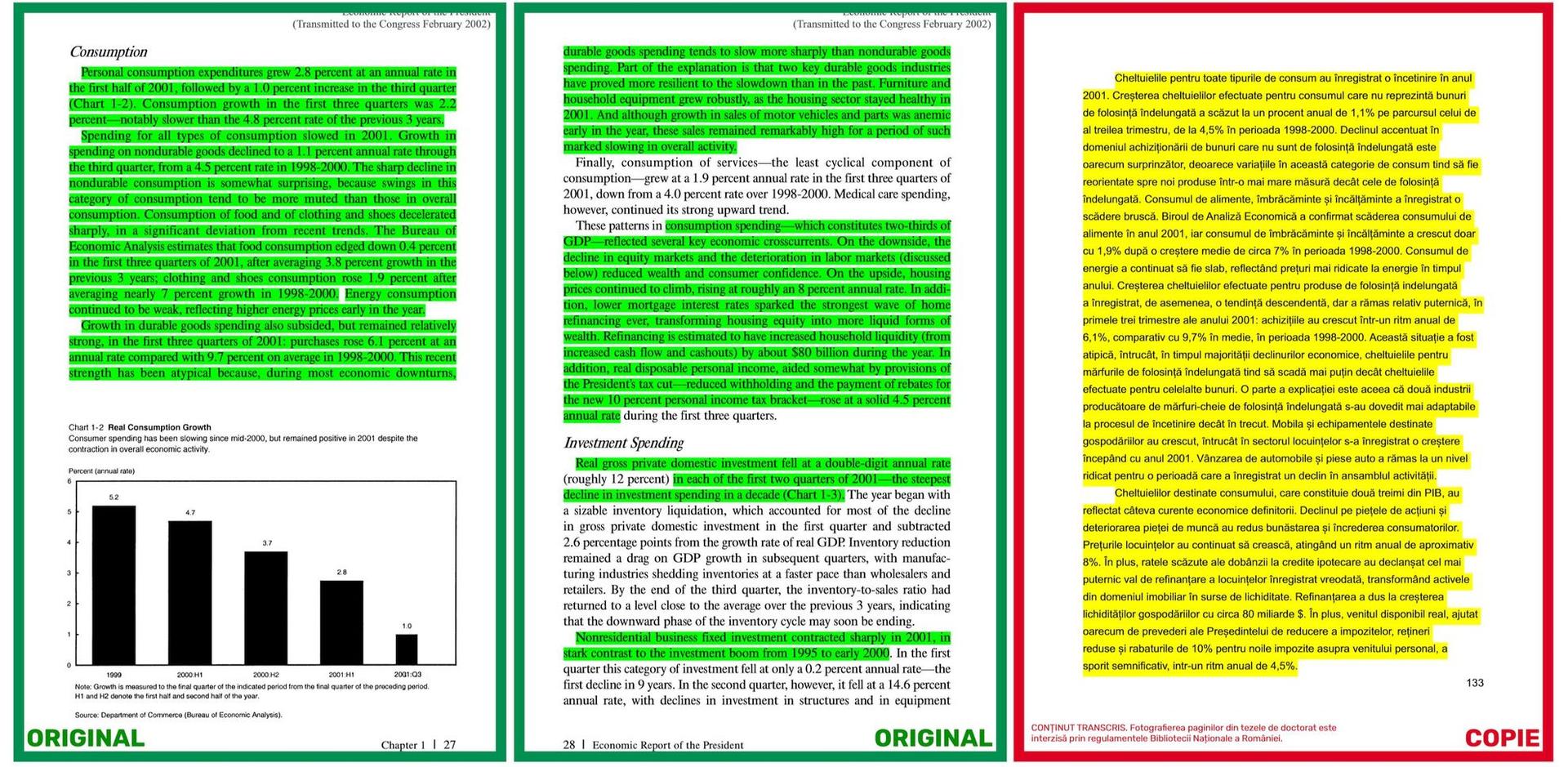
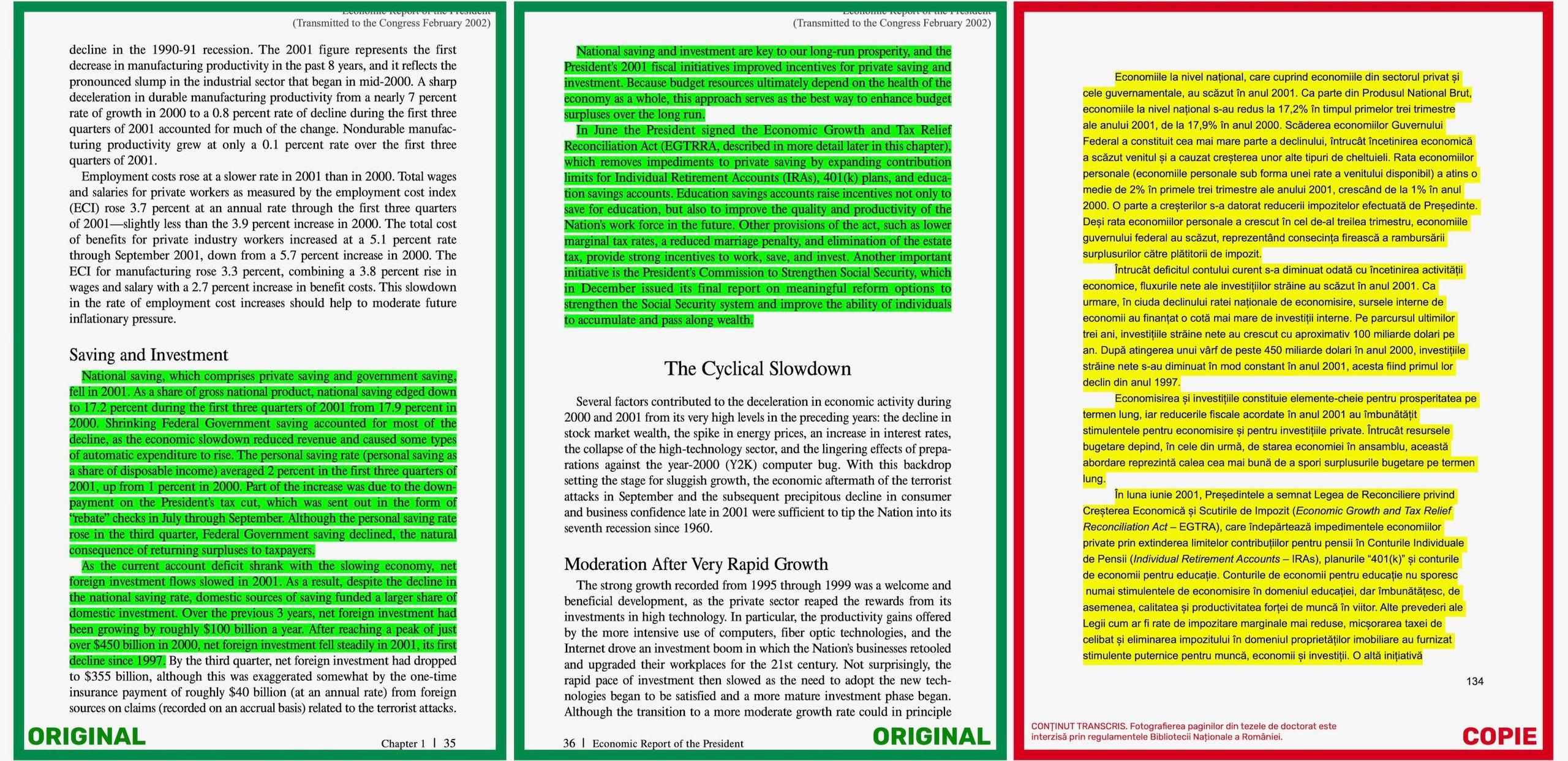
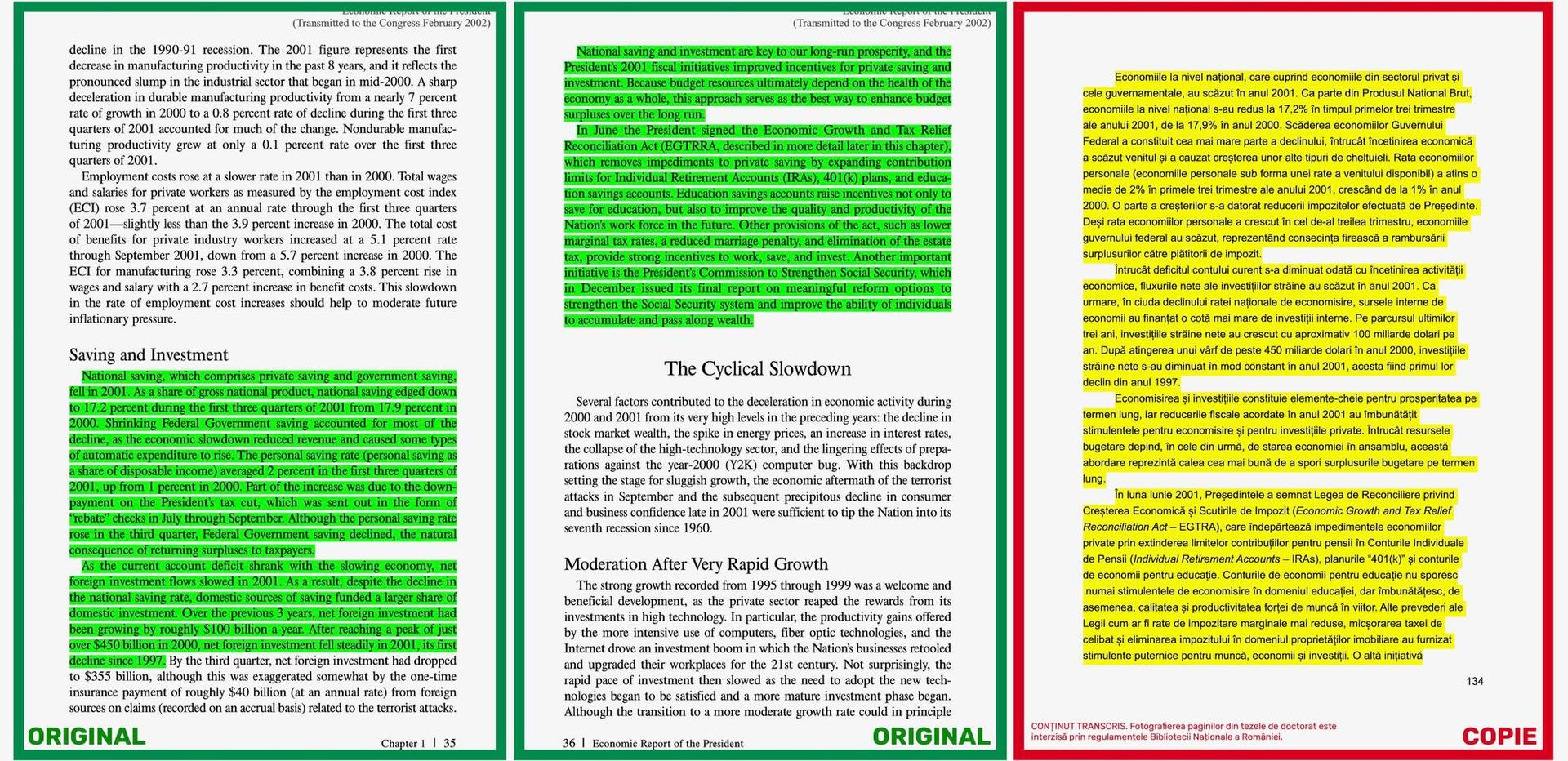
***
Most of the content of the thesis has no connection with the theme of the work - Evolutions in the North Atlantic Area. Conclusions for Romania's integration into Euro-Atlantic structures - and Mircea Geoană does not explain why various sectors in the USA, about which he presents hyper-detailed information, would be relevant for Romania's integration into Euro-Atlantic structures.
In the absence of a correlation, it is not clear why information such as the following was considered appropriate for the content of the thesis:
- "The Clinton administration created the Task Force on the National Information Infrastructure (NIIFT)." (p. 129)
- "[...] in March 2000, NASDAQ reached the IT stock market rate of 5132, in December 2000, the NASDAQ index reached 2288, losing in less than 9 months 50% of the market value." (p. 130)
- "The growth of spending on durable goods also recorded a downward trend, but remained relatively strong in the first three quarters of 2001: purchases increased at an annual rate of 6.1%, compared to 9.7% on average, in the period 1998-2000. (p. 133)
Also, the relevance of granular data referring to the U.S. economy is not explained, such as: analyzing inflation (p. 150), productivity and employment costs (pp. 152-154), energy and its use efficiency (p. 154), high interest rates (p. 154), the decline in stock prices in the high-tech sector (p. 155) etc.
The fabricated bibliography
The last sequence of plagiarized content I discovered in Mircea Geoană's thesis is found in the last subchapter of Chapter III, titled Perspectives, in which I discovered plagiarized content on all 7 pages, among which there are also two tables (one stretched over two pages) and a graph.
In the footnotes of Mircea Geoană's thesis, 36 works are cited - books and articles - by authors who sign individually or as co-authors.
In the Bibliography of the doctorate, however, 81 works are mentioned, signed by 76 authors, individually or as co-authors, and 12 articles signed by 11 authors, individually or as co-authors.
This means that Mircea Geoană included in the thesis bibliography two and a half times more works than those actually cited, which is inadmissible, because the bibliography must present only the cited authors, with extensive reference to their works.
On the other hand, some authors mentioned in the footnotes of the doctorate are not mentioned in the Bibliography. This is the case of Henry Kissinger, Pierre Moscovici or Samuel Huntington, whom, for example, he cites twice with the work Who Are We? The Challenges to America's National Identity (2004).
The only Romanian author included in the bibliography is the economist Mircea Coșea, who however is not cited anywhere in the content of the thesis.
Also, journalist Bob Woodward, who along with Carl Bernstein conducted the investigation that led to the resignation of U.S. President Richard Nixon in 1974, is included in the Bibliography with the book Maestro (2000), although it is not cited in the paper.
Geoană hides behind "the rules of that time"
In a discussion with PressOne about how he conceived his doctoral thesis, Mircea Geoană said that he knows that "there were things we mentioned", referring to the fact that he attributed the content written by other authors.
"I don't know, I'm telling you that what I did with my doctoral thesis was done absolutely honestly and I don't feel anything outside the rules of that time. Now...if the rules have changed in the meantime, that's something else," Geoană said.
NATO's Deputy Secretary General is not the first politician who, faced with evidence of plagiarism, automatically invokes "the rules of that time". Former Prime Ministers Victor Ponta, in 2012, and Nicolae Ciucă, in 2022, did it before him.
According to the legislation from the time when Ponta and Ciucă obtained the scientific title of doctor, both with theses defended in 2003, but also Geoană (2005), originality in a doctoral thesis was a mandatory condition.
Art. 22 of Government Decision no. 37/1999 on the organization and conduct of the doctorate, in force in 2005, stipulated that "the doctoral thesis must contain elements of originality specific to the approached field, as well as modalities of their scientific validation".
The condition of originality was also provided by art. 28, para. (2), which referred to the public defense of the doctoral thesis, which stated that "The debate focuses on the elements of originality of the doctoral thesis and on the value recognition of the obtained results".
Moreover, in his report, by which he decided to award the title of doctor to Mircea Geoană, his advisor, Professor Gheorghe Dolgu, specifies that "I found that criteria 1, 2 and 3 for the evaluation of the doctoral thesis are met".
In a response received from ASE to a request in which I asked to be informed what were "criteria 1, 2 and 3" in force in 2005 and invoked by Professor Dolgu, the university specifies that "the criteria are provided in the specialty reports of the members of the doctoral thesis defense committee and refer to:
- originality of the research;
- scientific relevance;
- the potential impact of the research results and the extent to which the thesis brings substantial contributions to knowledge;
- relevant specialized literature in the field".
To the remark that the originality of a thesis was a requirement when he defended his doctorate, a condition that has not changed in the meantime, Mircea Geoană said that in matters of plagiarism he is conceptually "much closer to your opinions than to others".
"No, no, and I'm not saying it would be good to change. And that this is, in fact, the essence of such an issue. But all [my] work was done seriously and I have no... Regarding what plagiarism means, I am much closer to your opinions than to others'."
He also stated that he would have no problem if it is proven that his thesis is plagiarized: "I have no problem the moment something is proven to be outside the, let's say, academic norms of that time. I have no problem, I am absolutely in line with you and with anyone else who does this in a, how to say, balanced and objective manner."
Editor: Mona Dîrțu
***
PressOne publishes tomorrow a continuation of this investigation, in which it puts the spotlight on the 12 years between Mircea Geoană's enrollment for his PhD in 1993 and the defense of his thesis in 2005. The investigation aims to shed light on how the Academy of Economic Studies respected the legal provisions and to find an answer to the question: should Mircea Geoană have been expelled from the doctorate during the 12 years and if so, when exactly?
You will also find out from tomorrow's article: what grade Mircea Geoană obtained for the plagiarized doctoral thesis; how many study interruptions he had in 12 years; who were the reviewers and how they appreciated the plagiarized thesis; what the Academy of Economic Studies says about the studies of NATO's Deputy Secretary General.
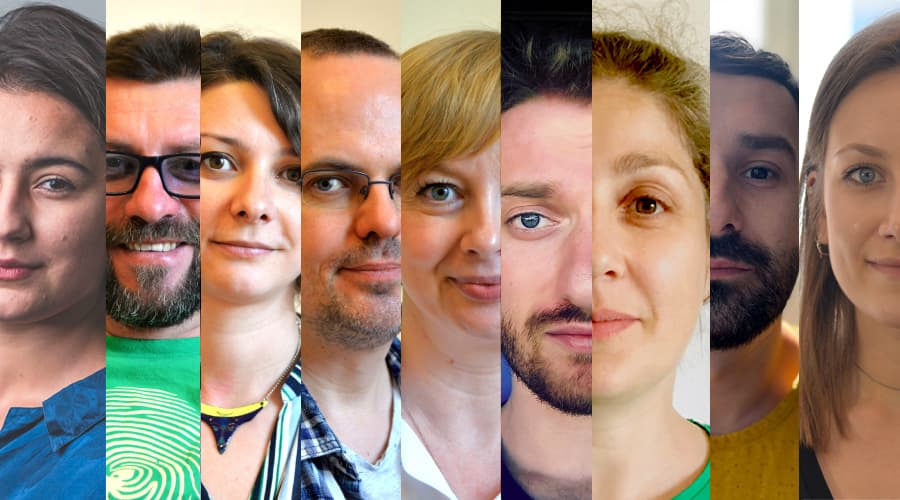
Avem nevoie de ajutorul tău!
Mulți ne citesc, puțini ne susțin. Asta e realitatea. Dar jurnalismul independent și de serviciu public nu se face cu aer, nici cu încurajări, și mai ales nici cu bani de la partide, politicieni sau industriile care creează dependență. Se face, în primul rând, cu bani de la cititori, adică de cei care sunt informați corect, cu mari eforturi, de puținii jurnaliști corecți care au mai rămas în România.
De aceea, este vital pentru noi să fim susținuți de cititorii noștri.
Dacă ne susții cu o sumă mică pe lună sau prin redirecționarea a 3.5% din impozitul tău pe venit, noi vom putea să-ți oferim în continuare jurnalism independent, onest, care merge în profunzime, să ne continuăm lupta contra corupției, plagiatelor, dezinformării, poluării, să facem reportaje imersive despre România reală și să scriem despre oamenii care o transformă în bine. Să dăm zgomotul la o parte și să-ți arătăm ce merită cu adevărat știut din ce se întâmplă în jur.
Ne poți ajuta chiar acum. Orice sumă contează, dar faptul că devii și rămâi abonat PressOne face toată diferența. Poți folosi direct caseta de mai jos sau accesa pagina Susține pentru alte modalități în care ne poți sprijini.
Vrei să ne ajuți? Orice sumă contează.
Share this

